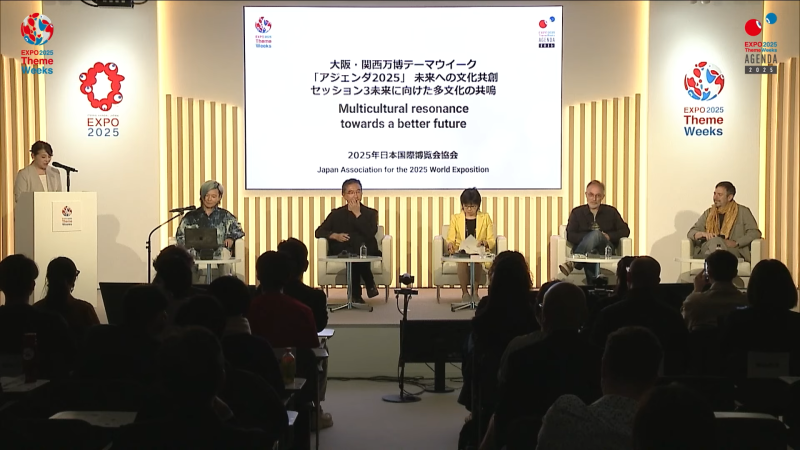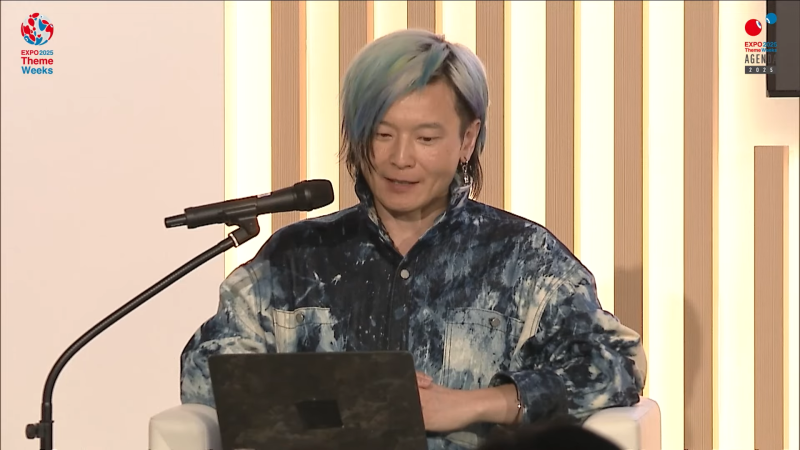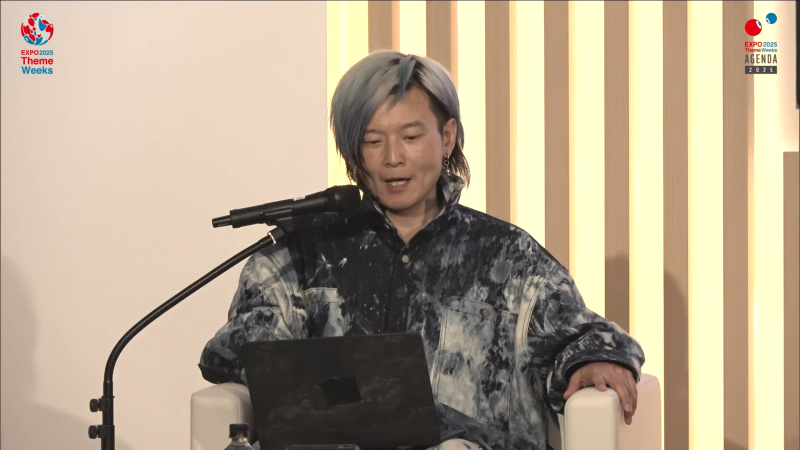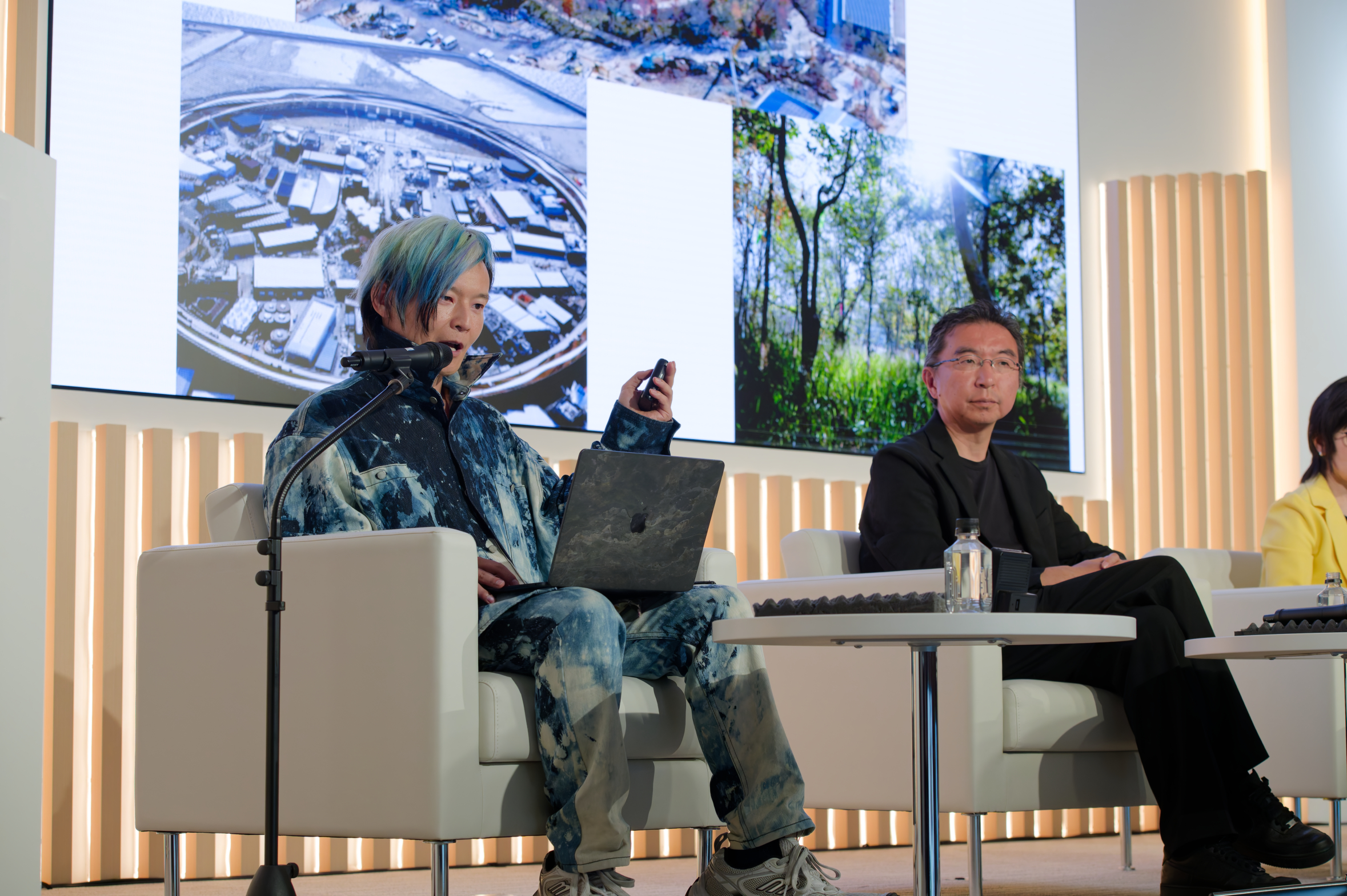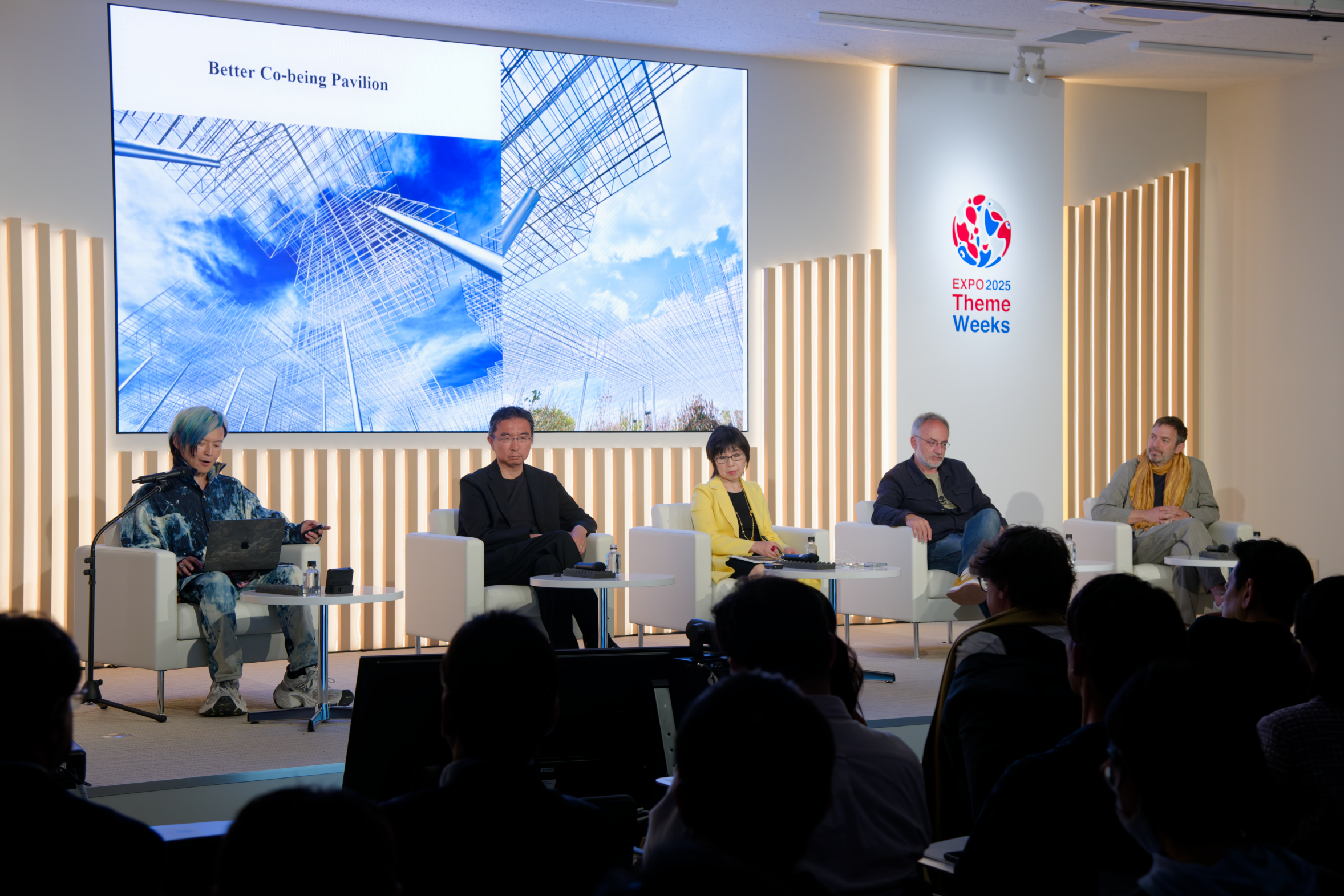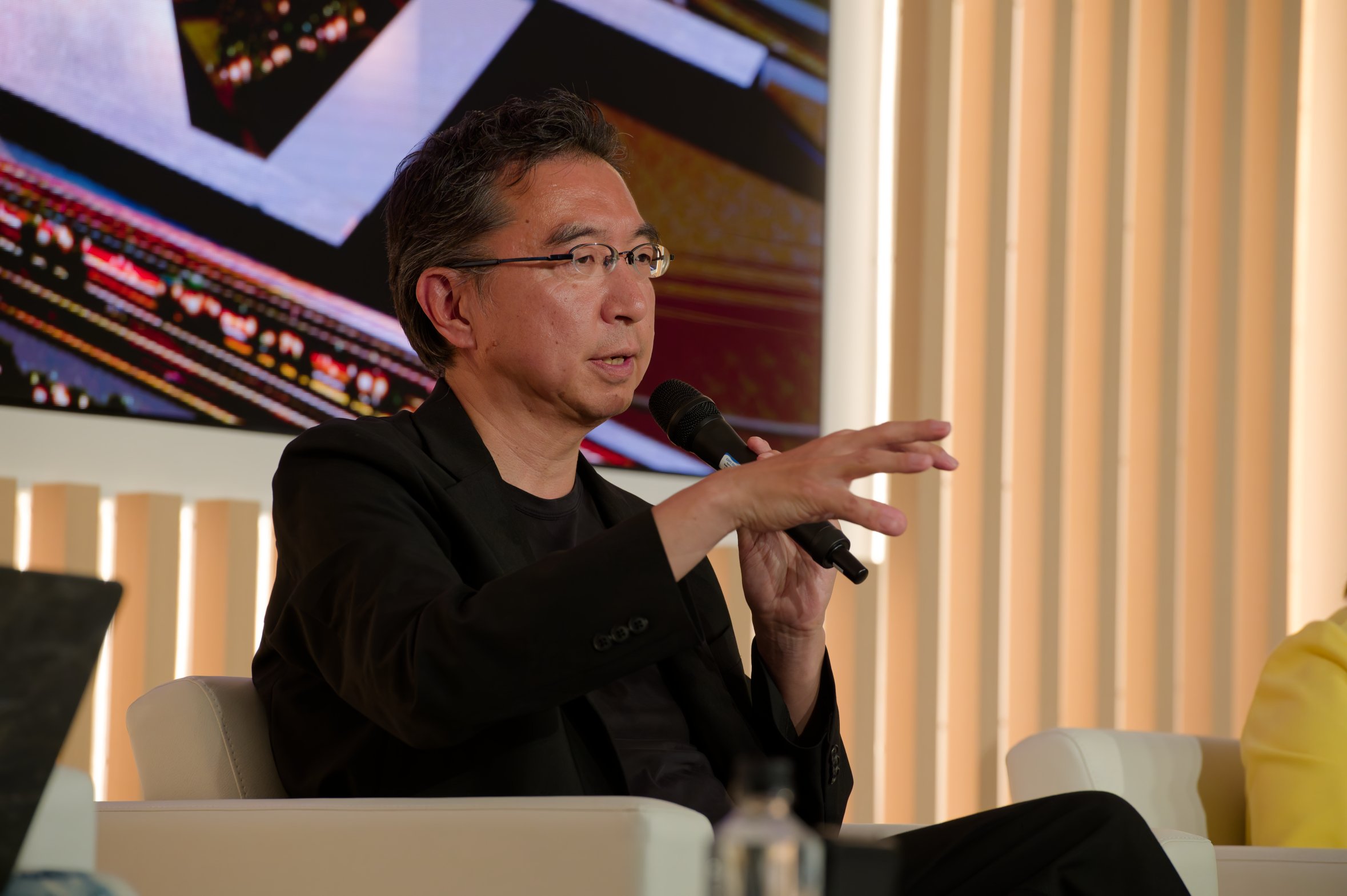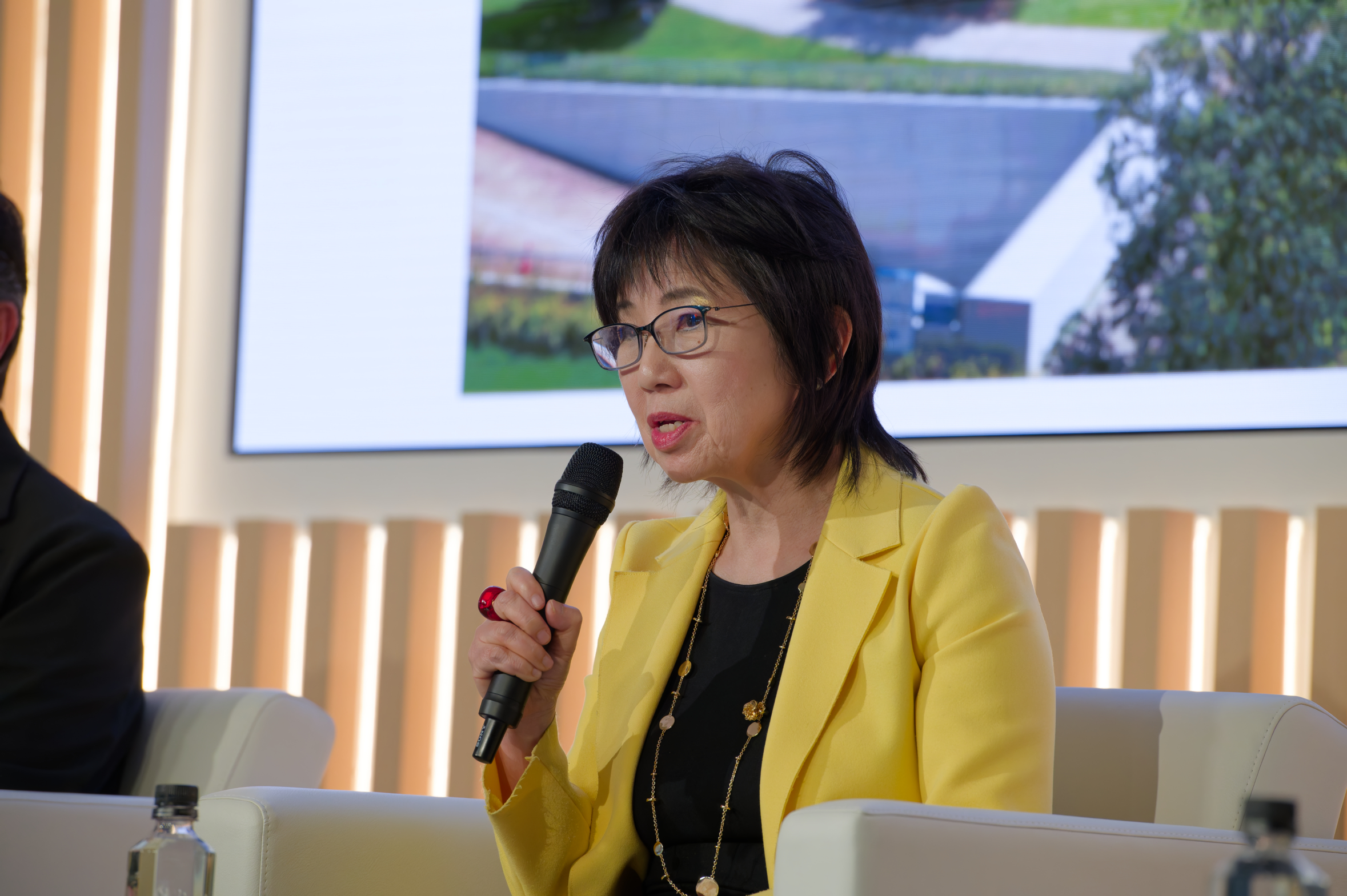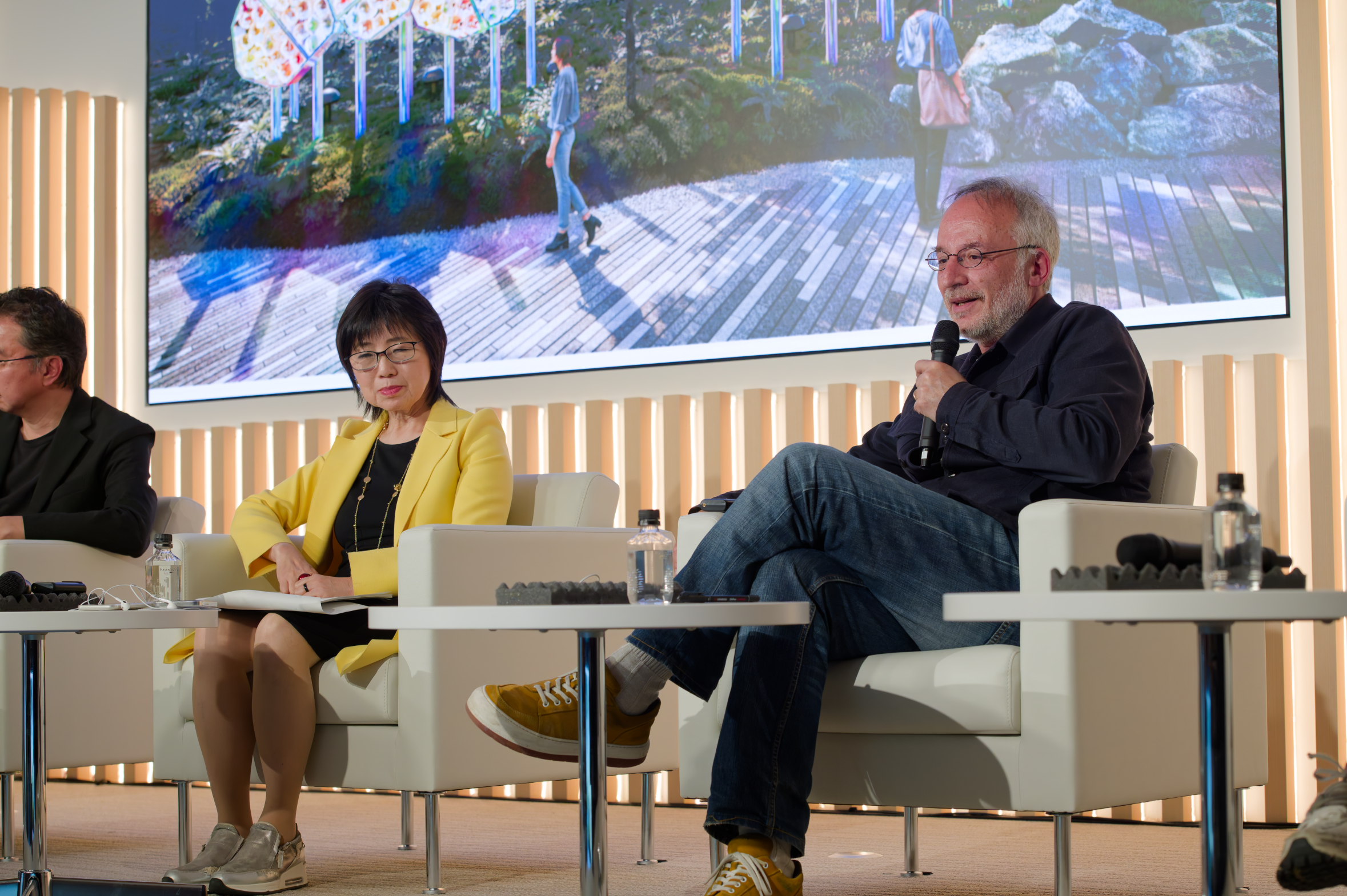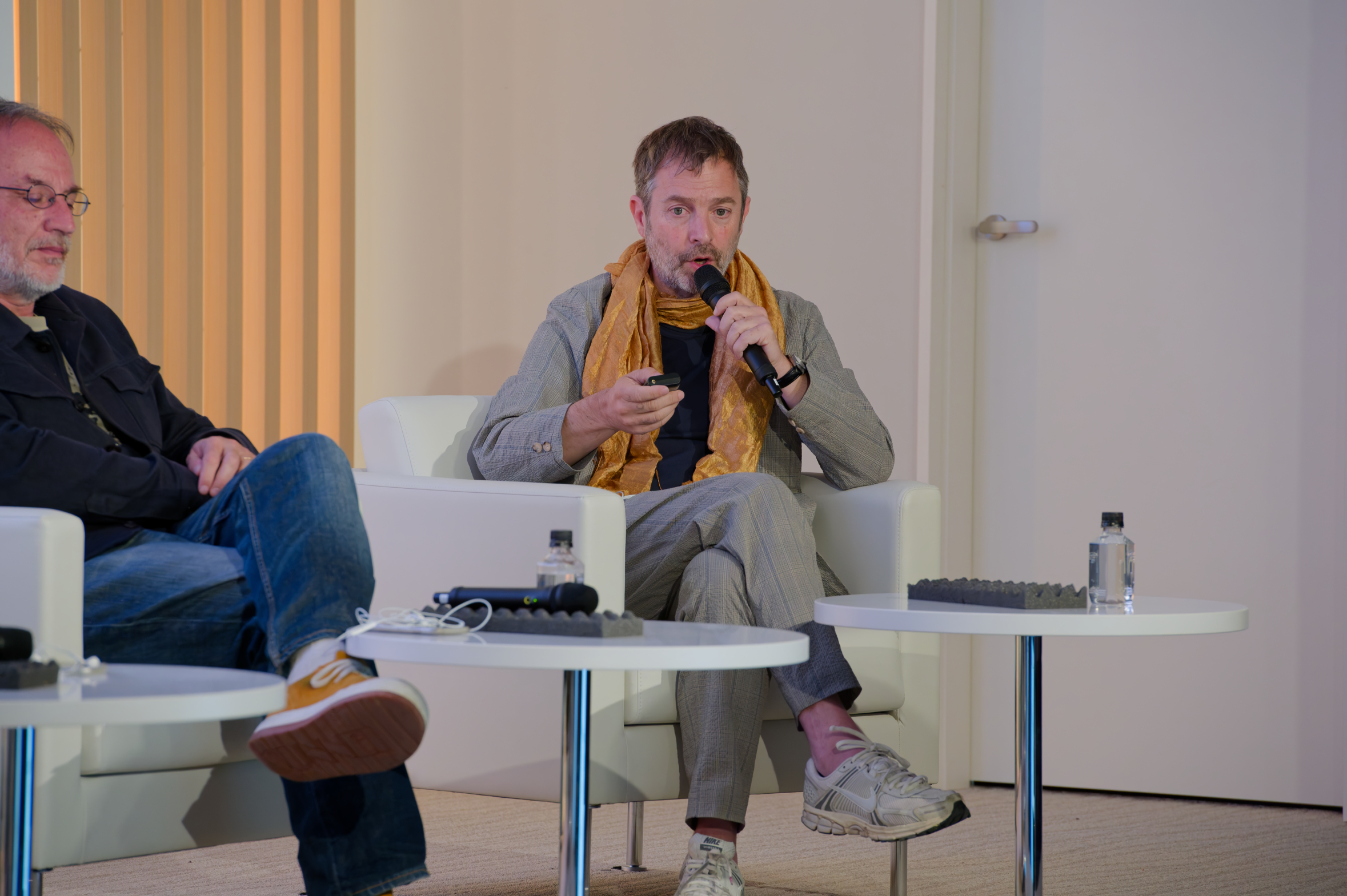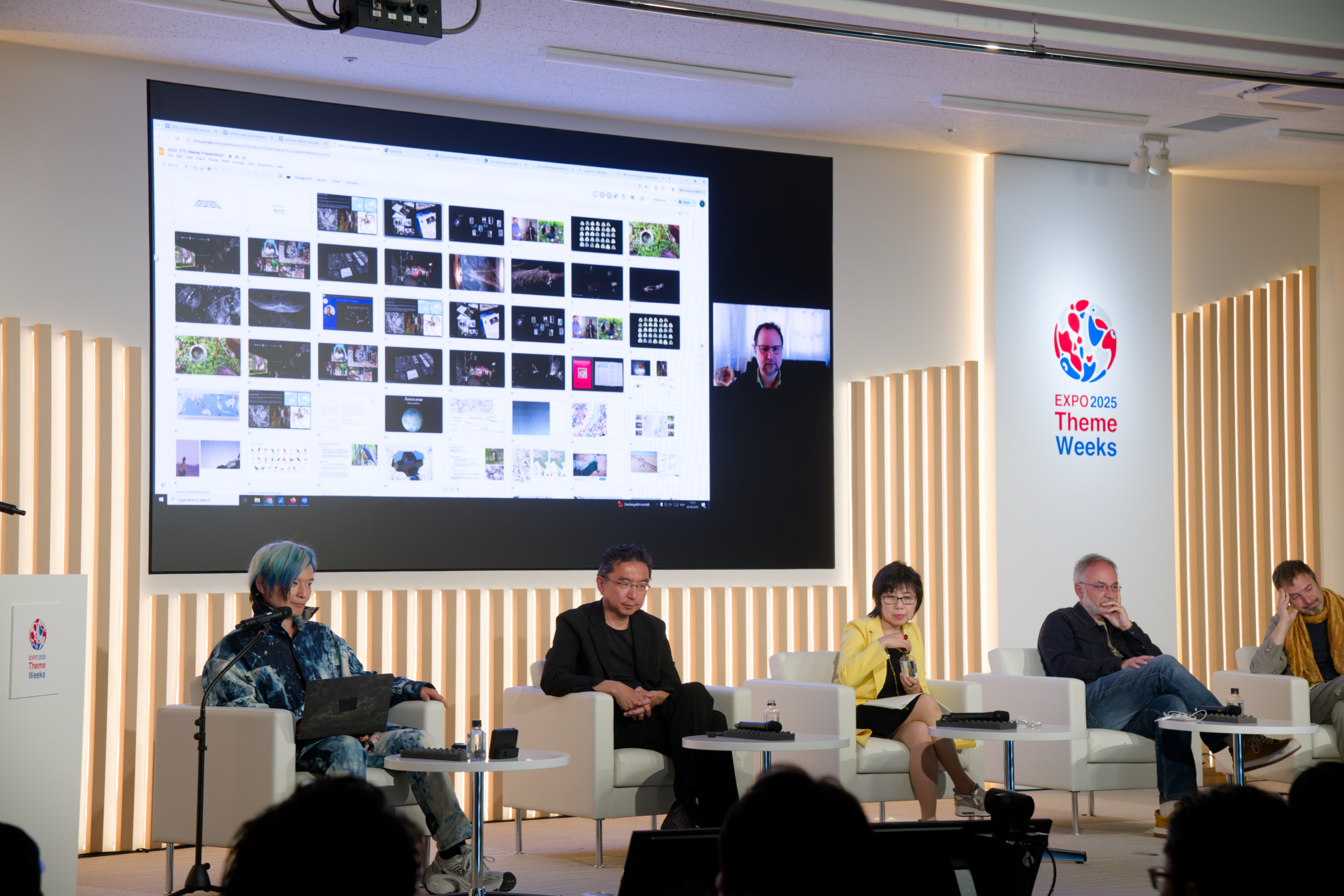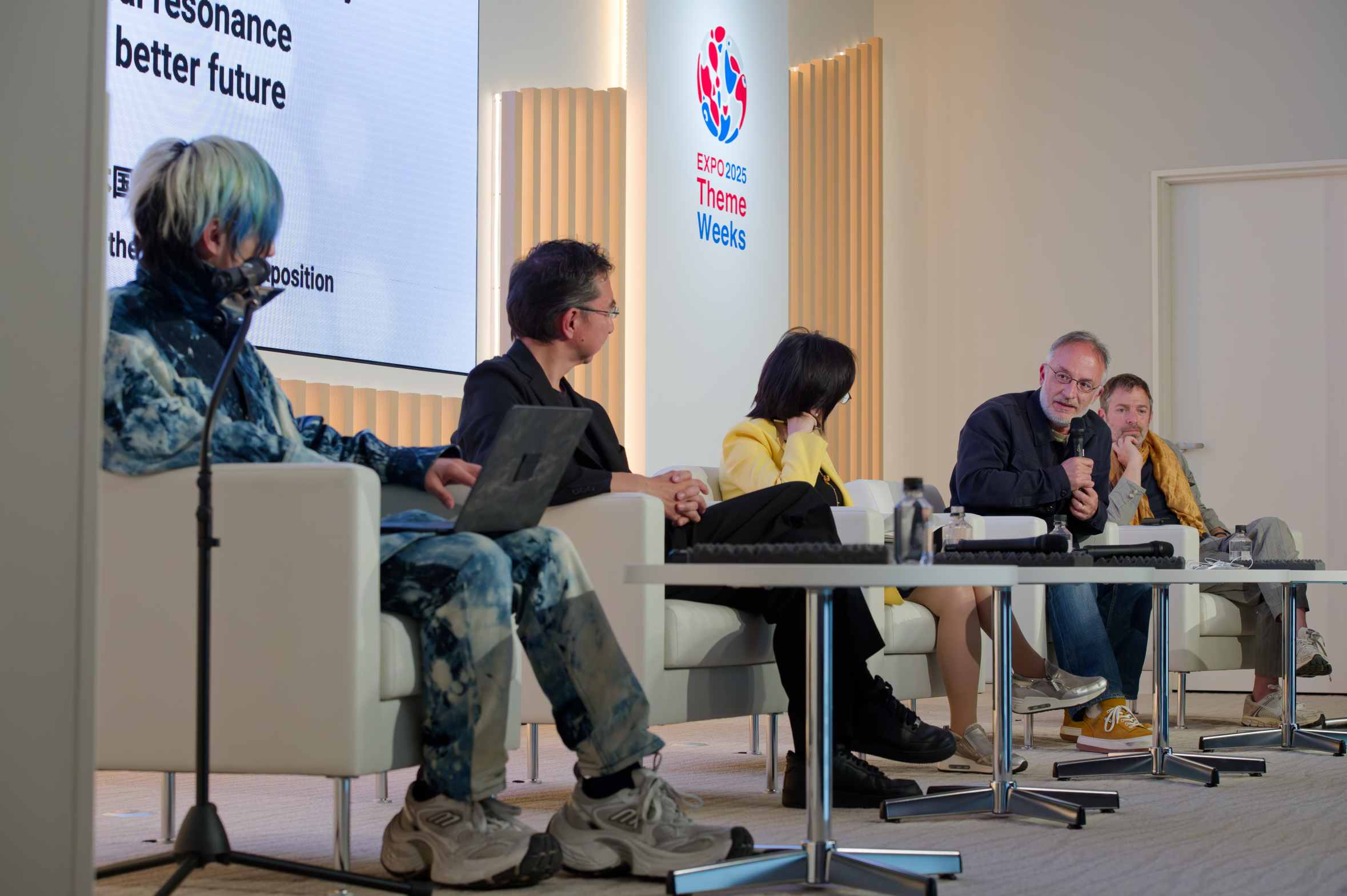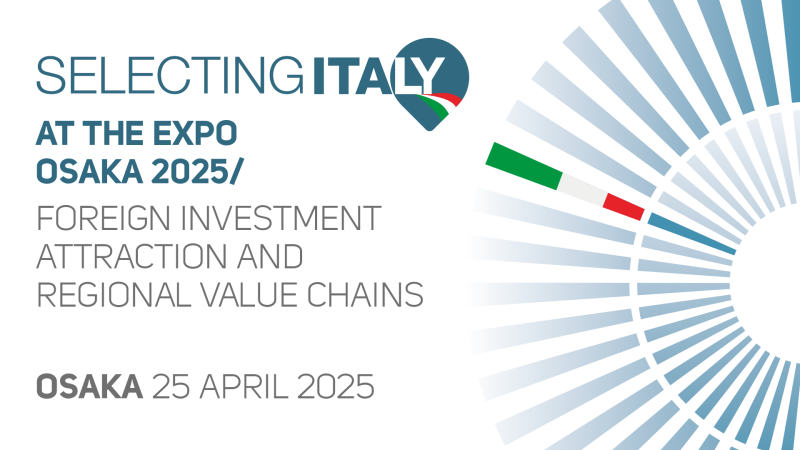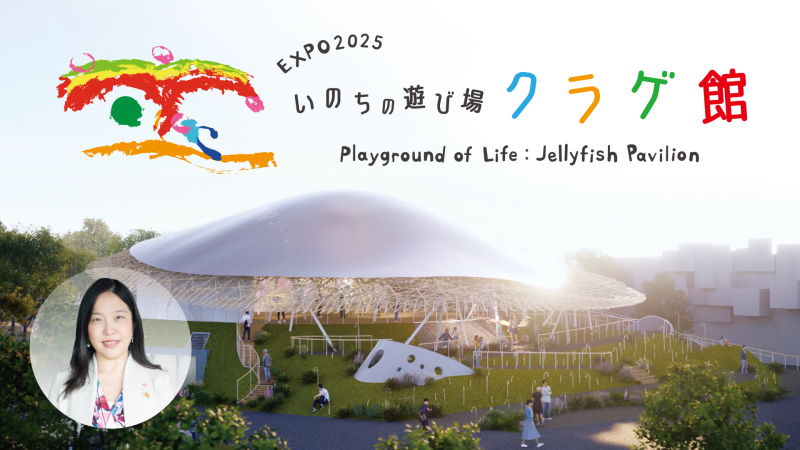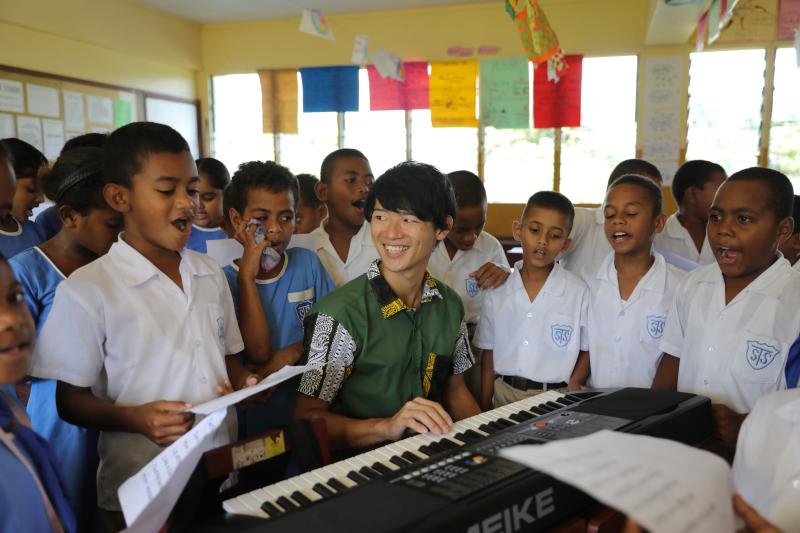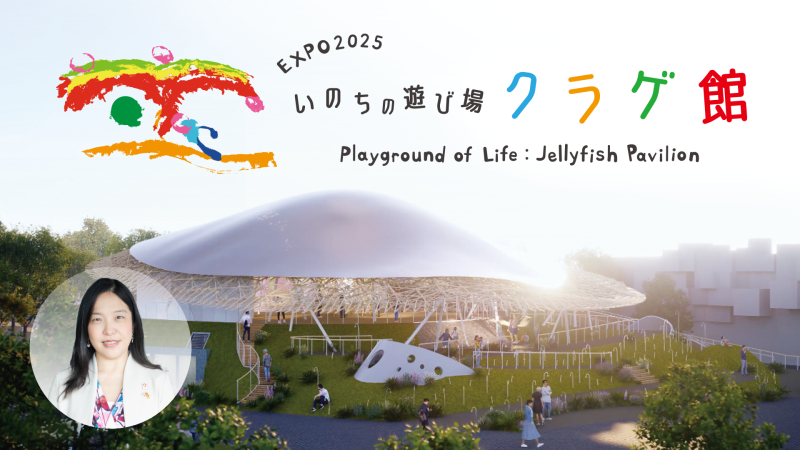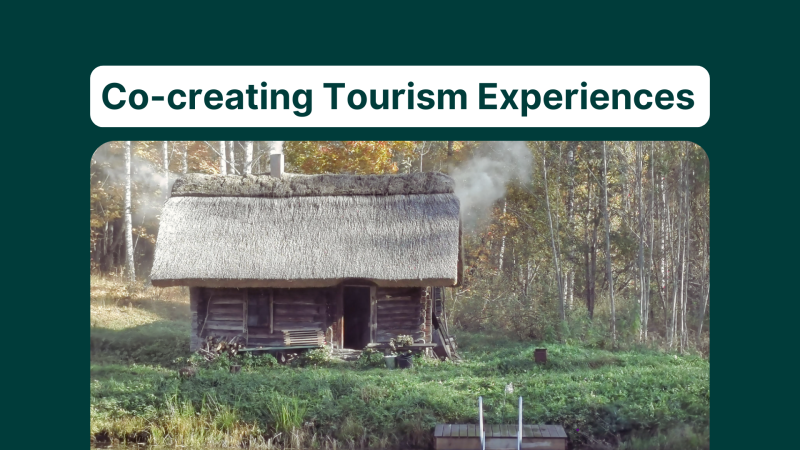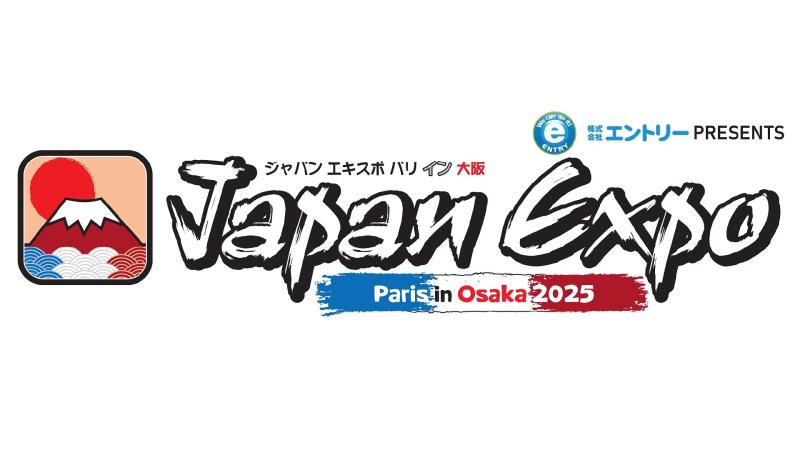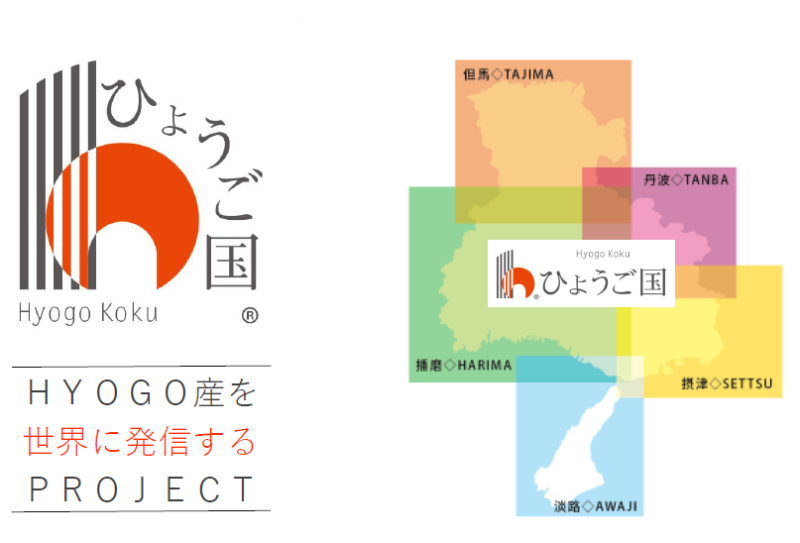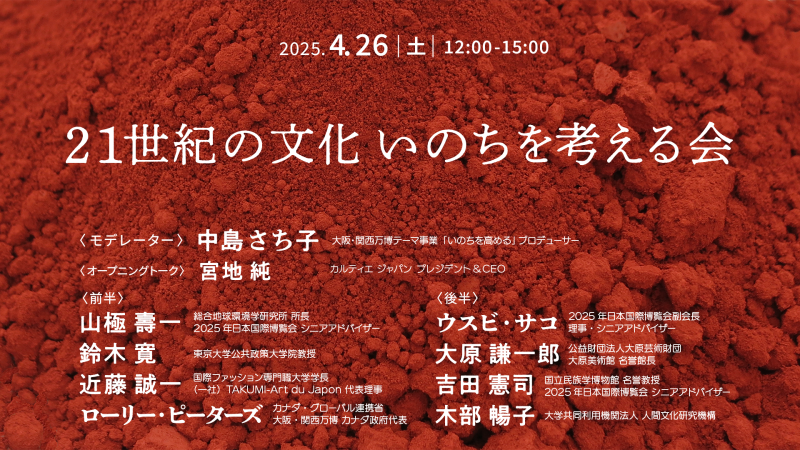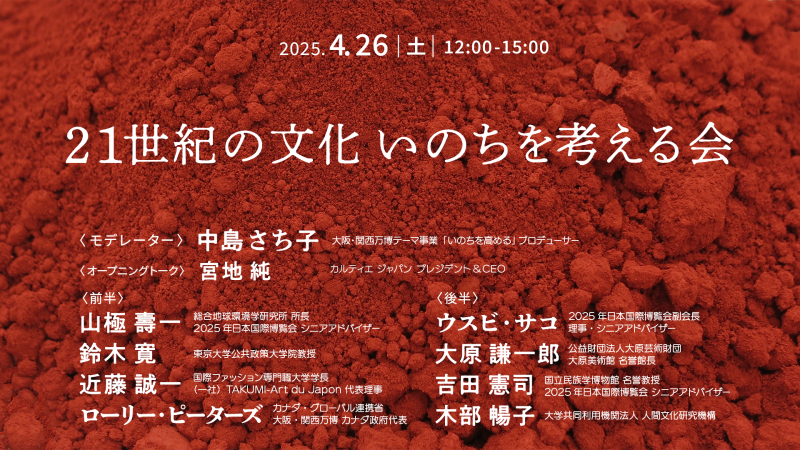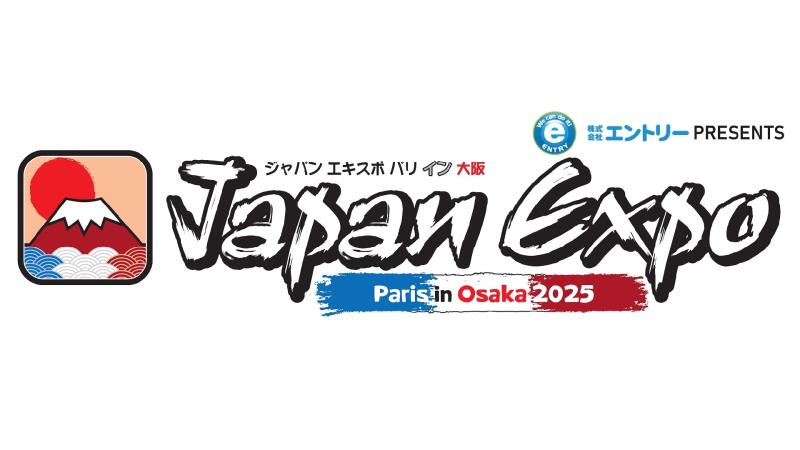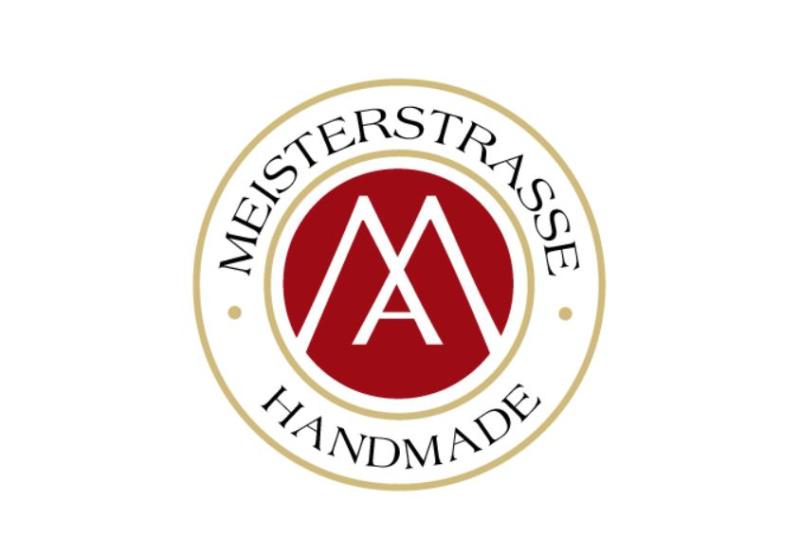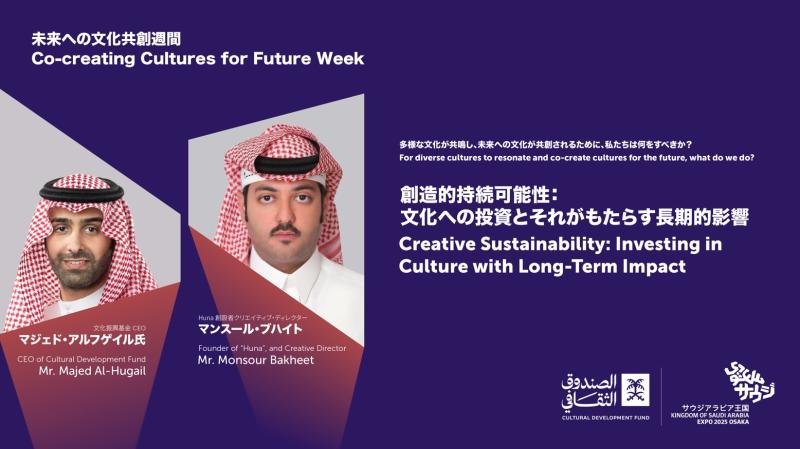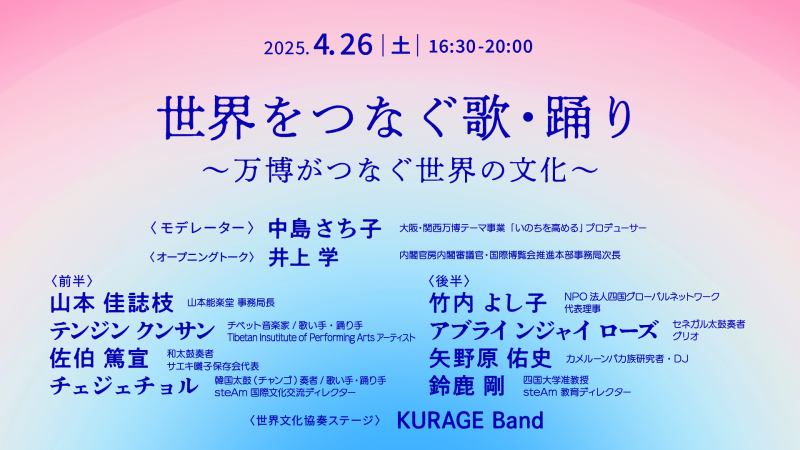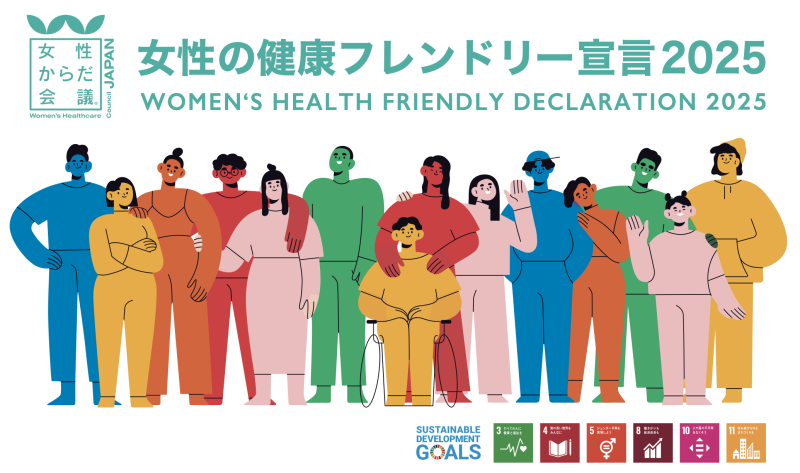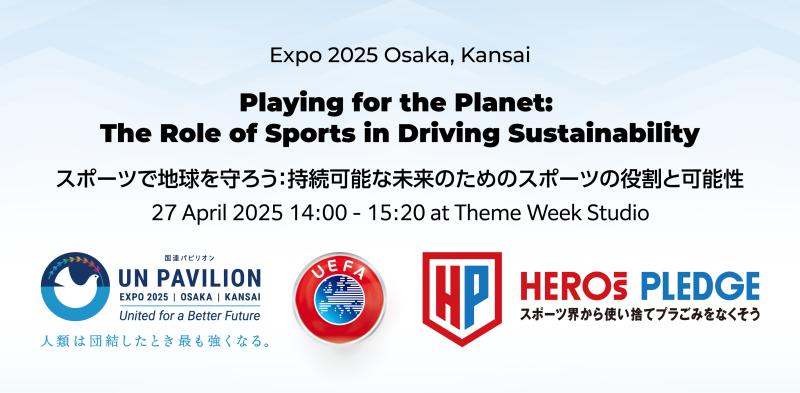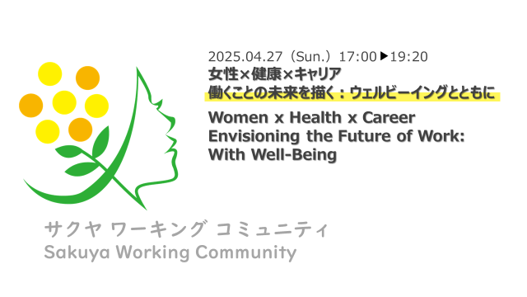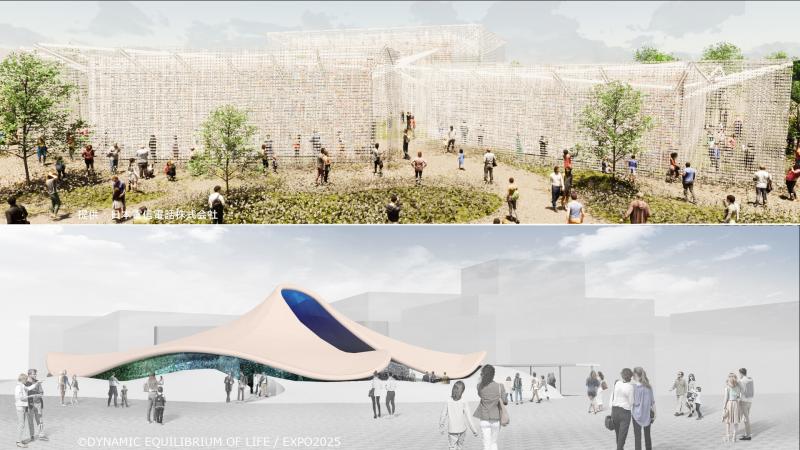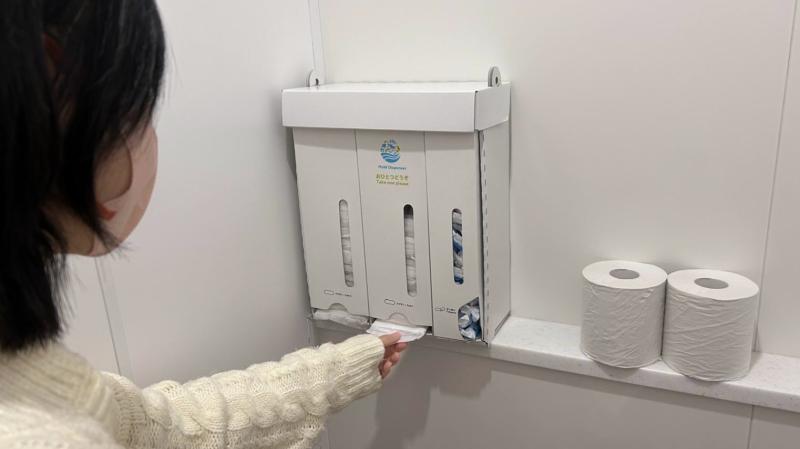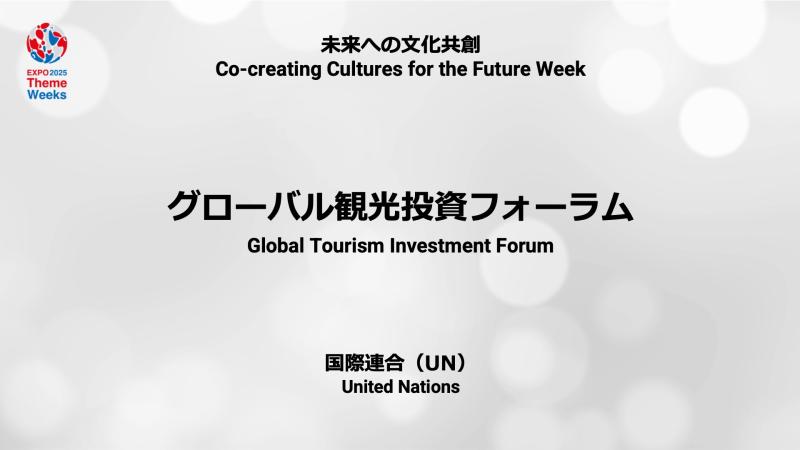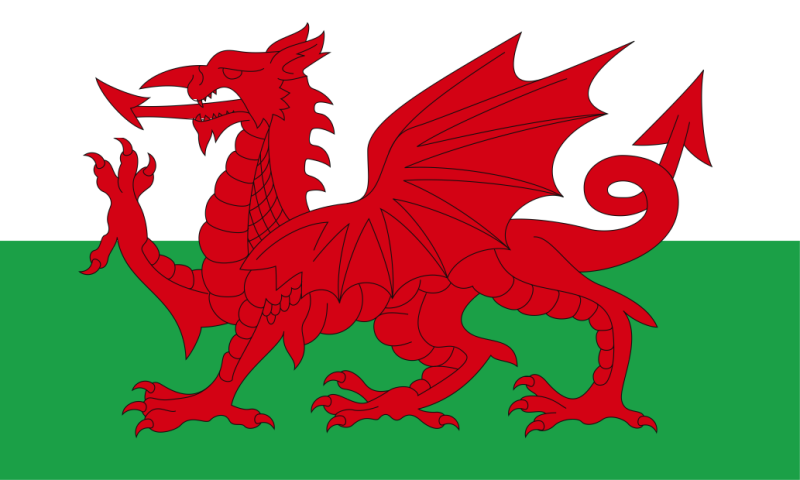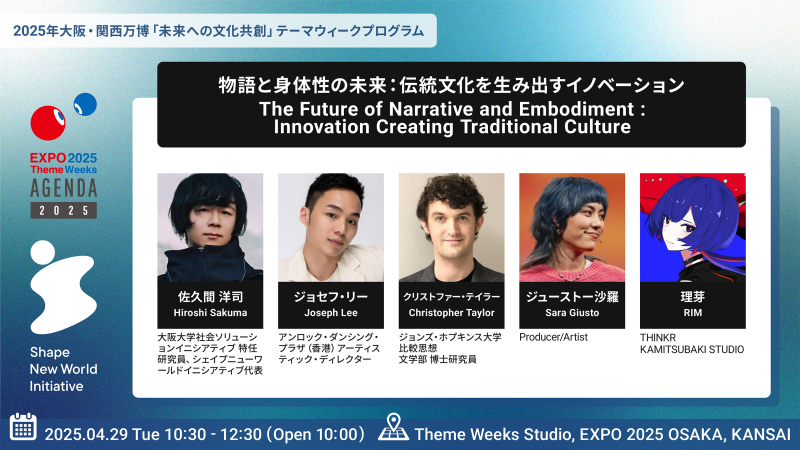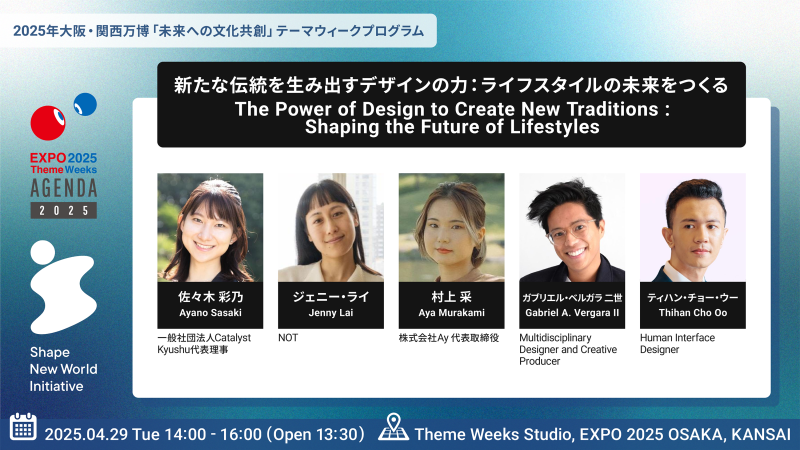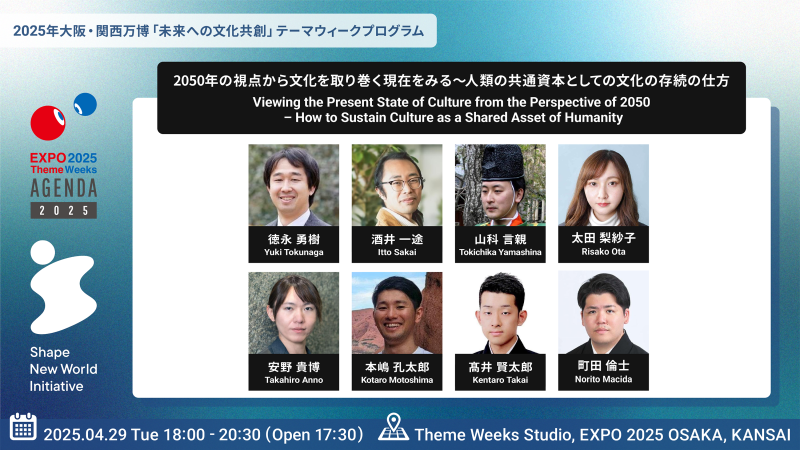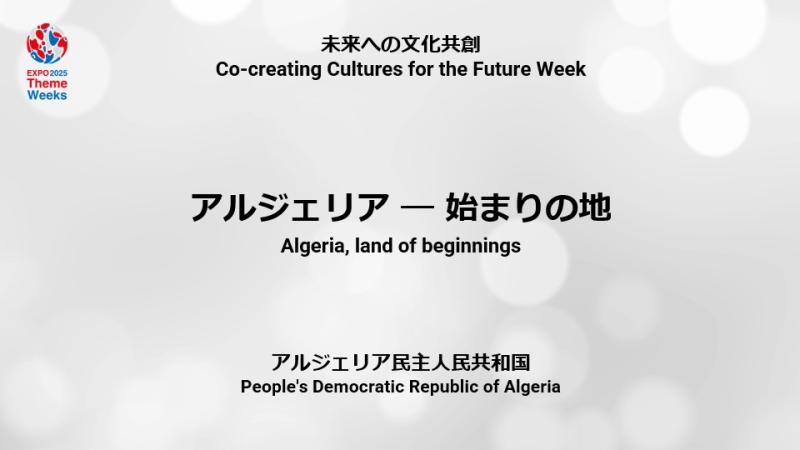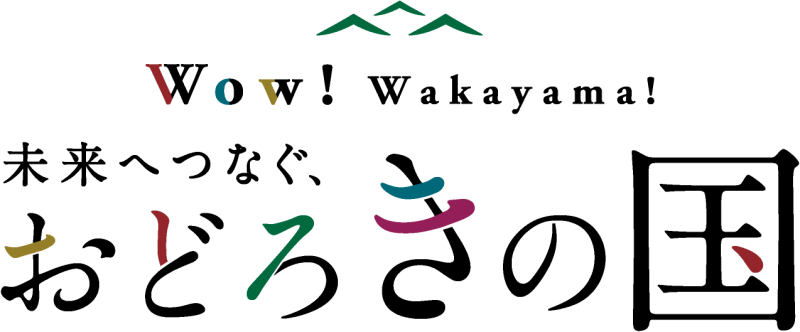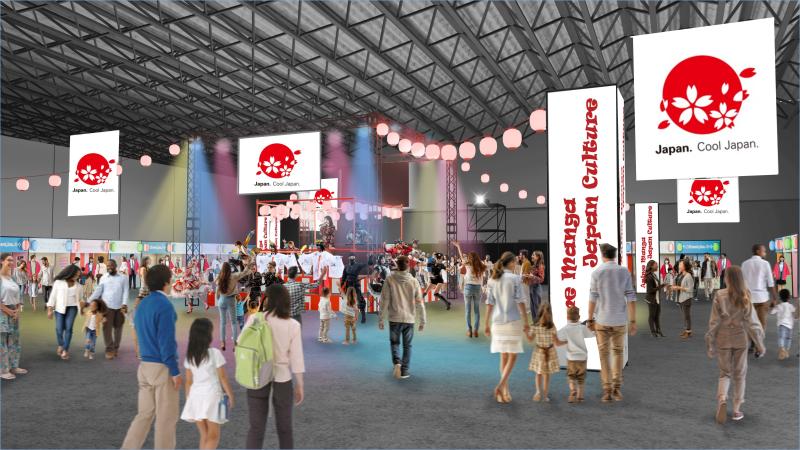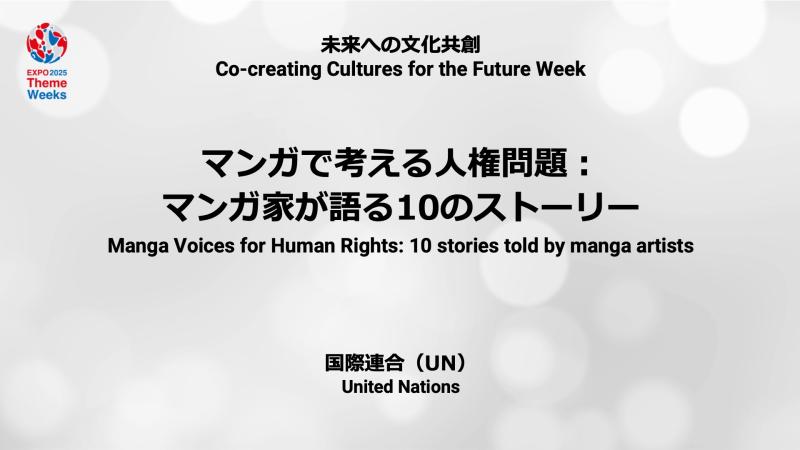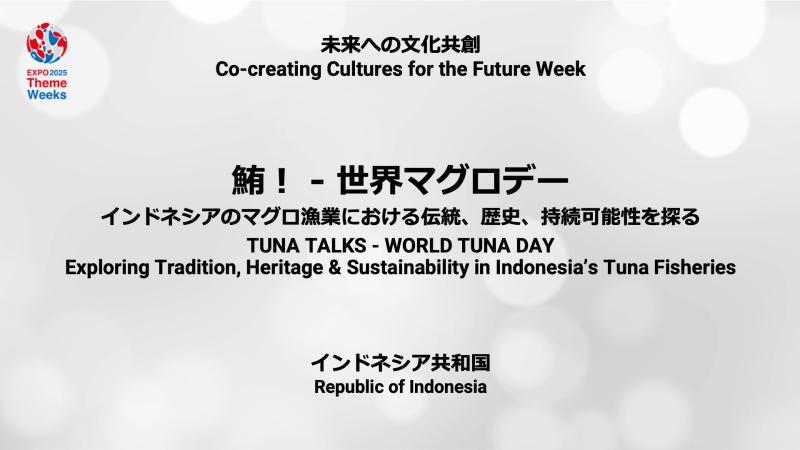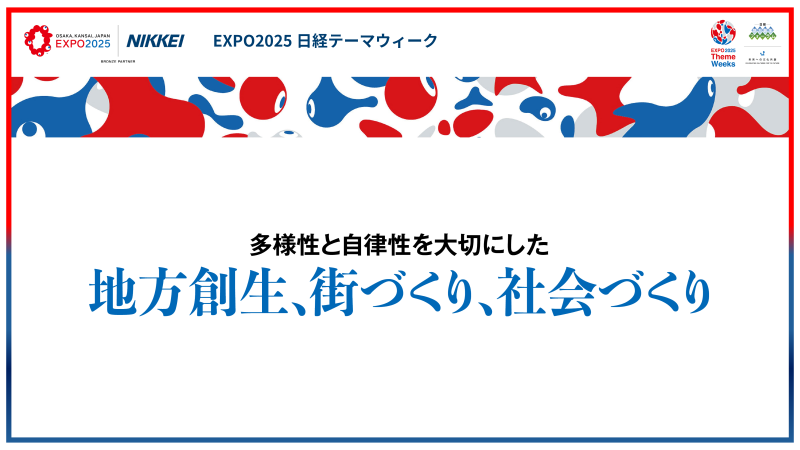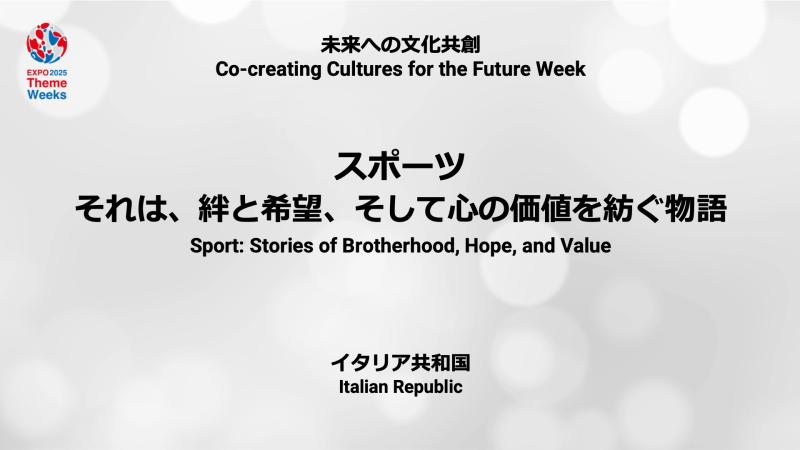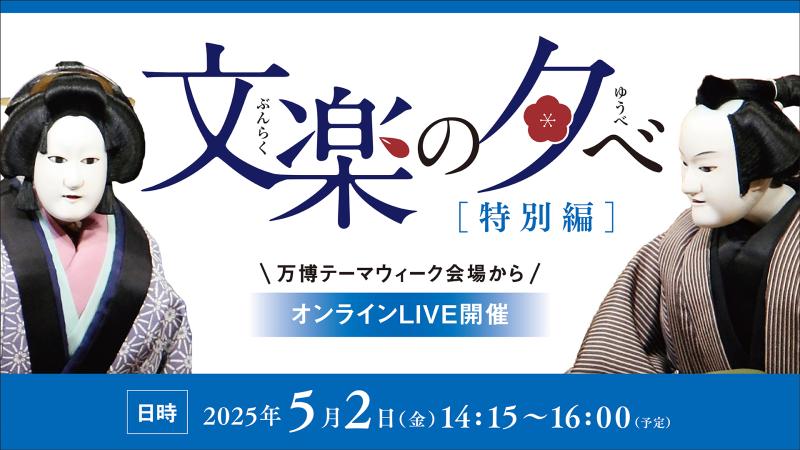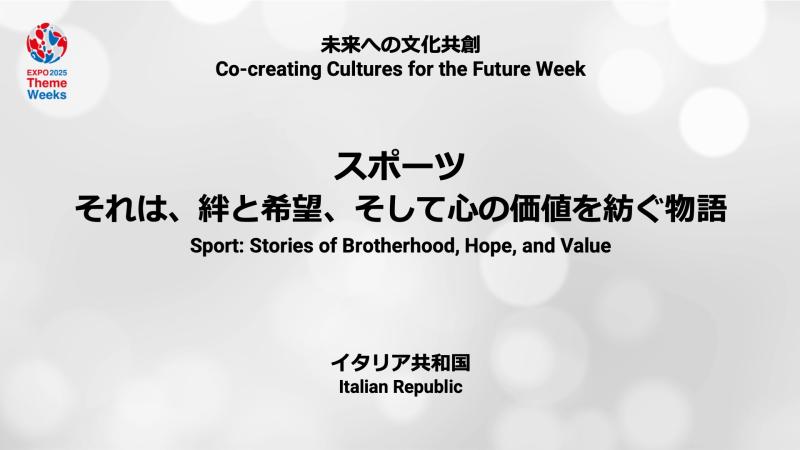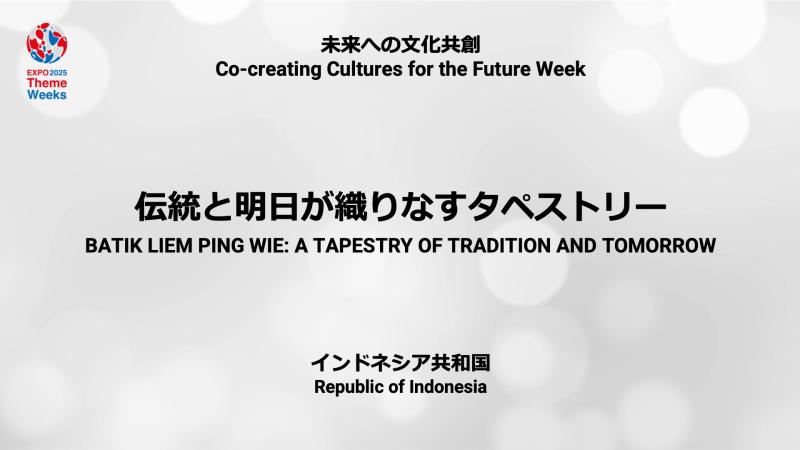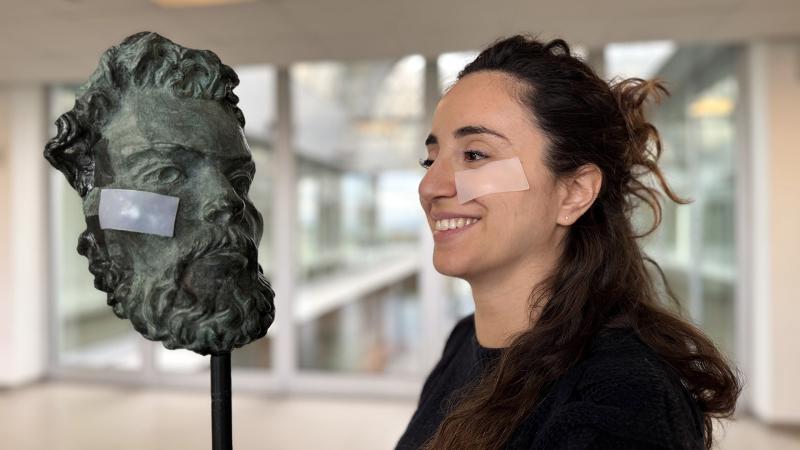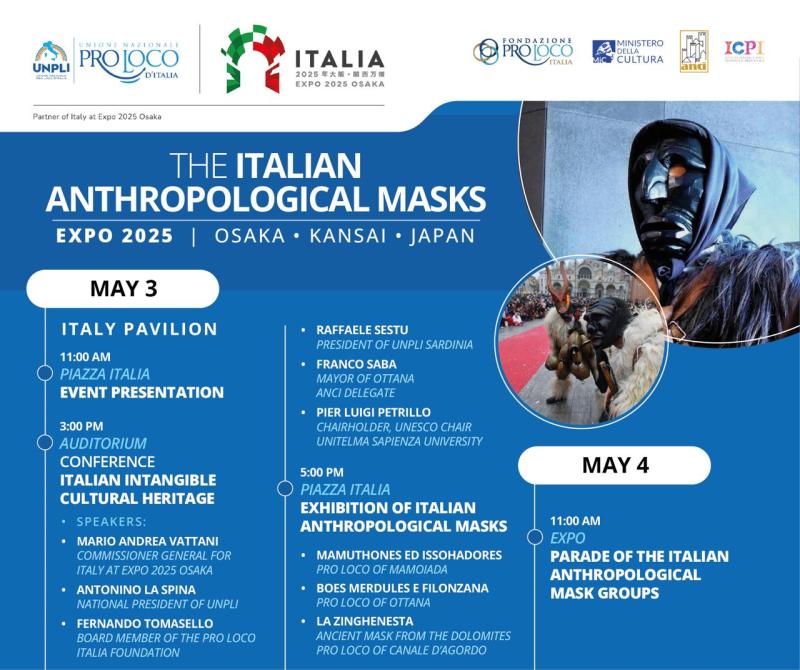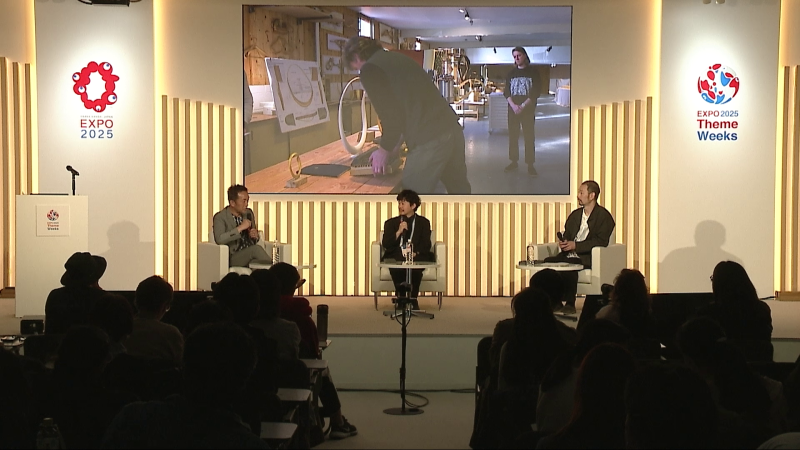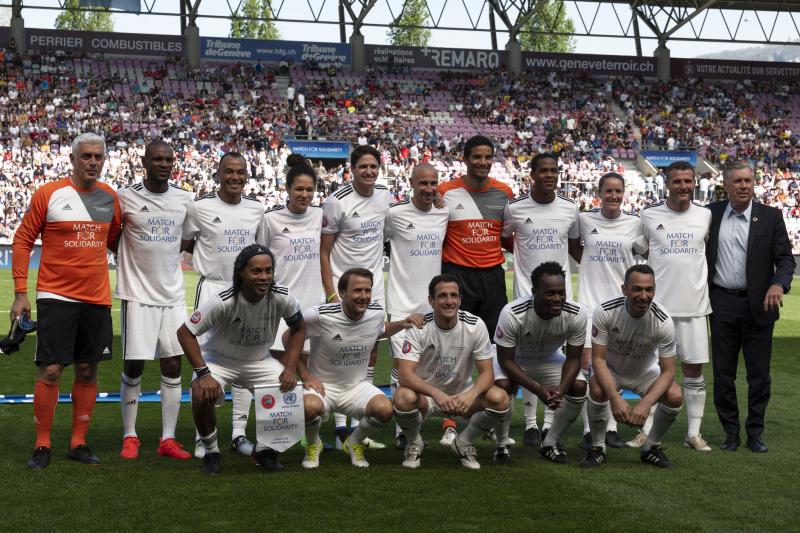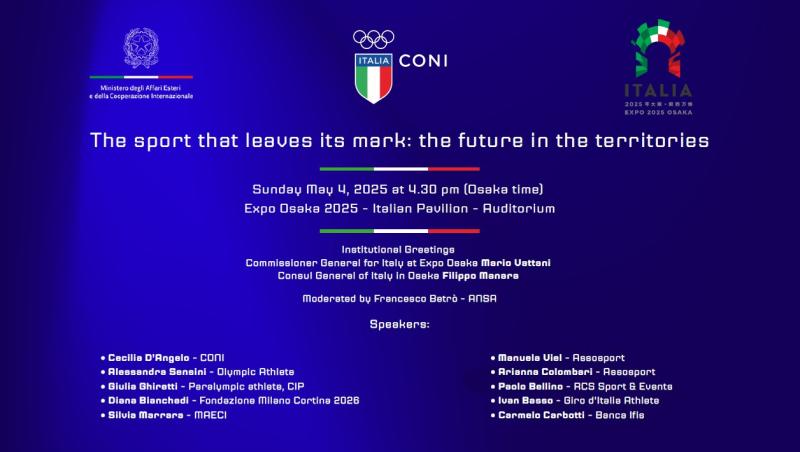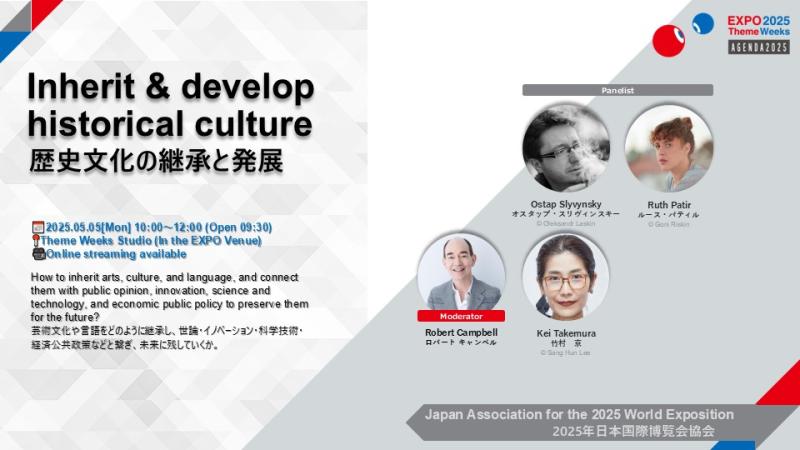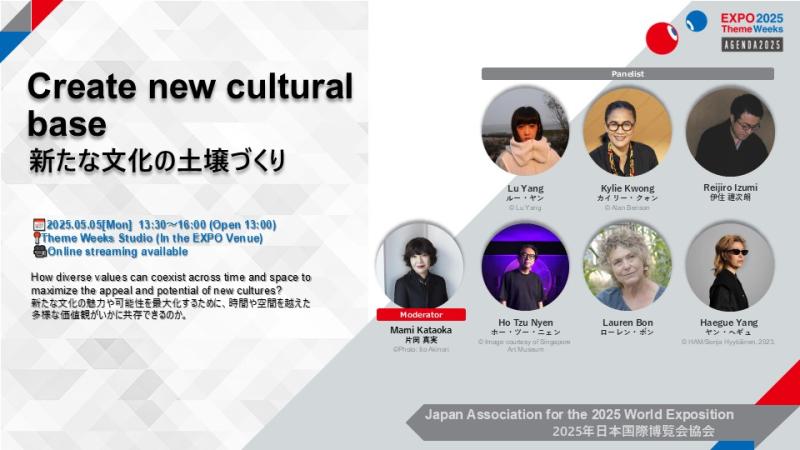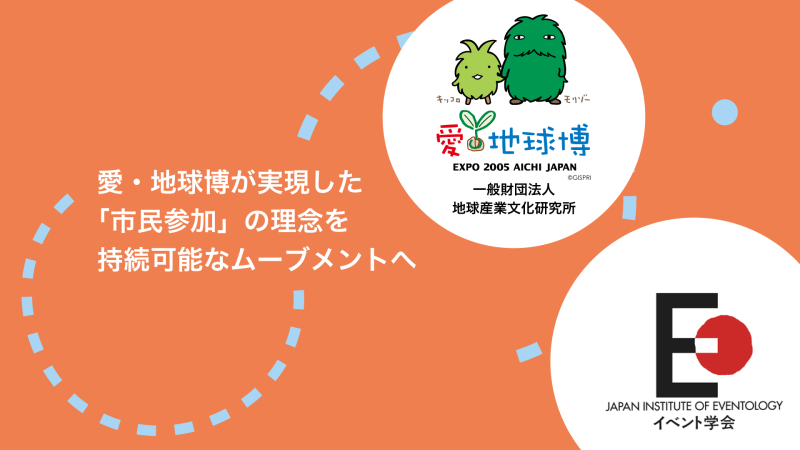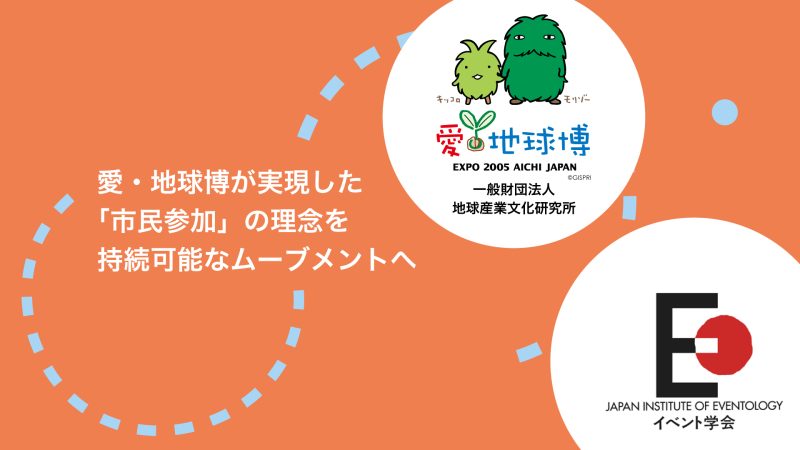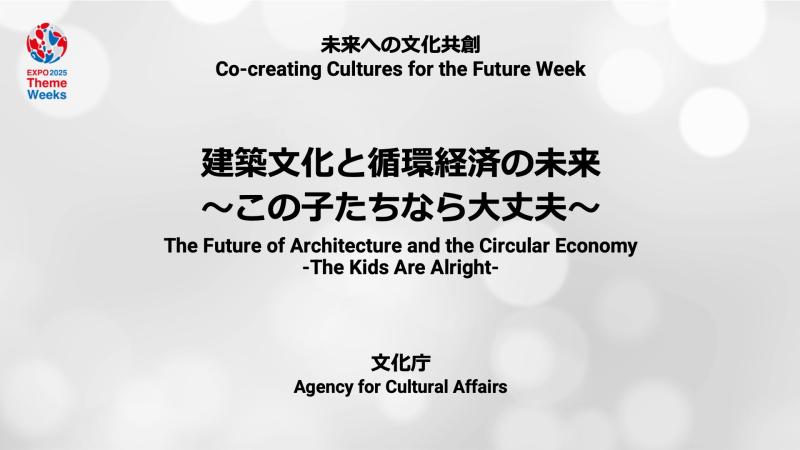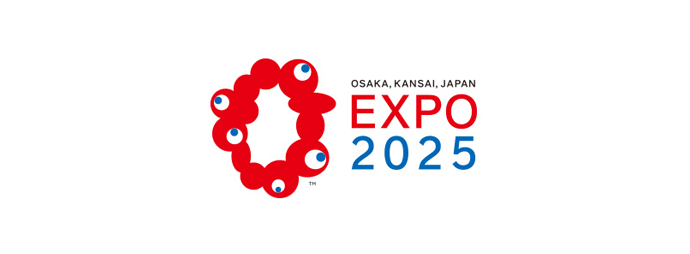Co-creating Cultures for the Future Week
Multicultural resonance towards a better future
Japan Association for the 2025 World Exposition
The programme, together with the General Sponsors, explores: 'What creative collaborations and actions can be considered for working together across different cultures to solve common challenges?'
Recorded video available
Discussion
| Transmission of simultaneous interpretation | Provided |
|---|---|
| Language of interpretation | Japanese and English |
-
Agenda2025
Organised Programme
- Time and
Date of
the event -
-
2025.05.05[Mon]
17:30 ~ 20:00
(Venue Open 17:00)
-
- Venue
- Theme Weeks Studio
Programme details
*Subtitles: Choose “Subtitles/CC” in the “Settings” (gear icon) at the bottom right of the YouTube video. *Subtitles may not show with multiple languages or overlapping audio.
Futures in Resonance
The six creators who jointly realised Expo 2025’s signature trilogy—the Grand Roof Ring, Stillness Forest and the Better Co-Being Pavilion—convene for a 120-minute dialogue entitled “How can diverse cultures, intelligences and forms of life truly resonate to co-design the future?”
Part 1: each speaker delivers a 7-minute field report, revealing the backstage process of collaborative making.
Part 2: three themed chapters—Planetary Resonance, Life Resonance and Future Resonance—spark cross-questioning on non-human intelligence, intercultural value weaving and better co-being.
Whether or not audience members have walked the installations, layered images, footage and narrative rebuild the on-site experience inside the hall, letting everyone follow the resonance process in real time. The session closes with moderator Hiroaki Miyata handing the baton to the audience, inviting each listener to ignite the next wave of resonance beyond the Expo grounds.
*Tomás Saraceno will be appearing the session online.
Reports
【Program Summary】
The session “Resonance of Multiculturalism Toward the Future” at Expo 2025 Osaka, Kansai, Japan served as a platform where intellect and sensibility from multiple fields intersected to address the challenges of contemporary society and explore visions for the future. In this program, speakers with diverse expertise in fields such as science, architecture, art, and philosophy engaged in dialogue centered around the theme of “resonance,” seeking possibilities for new value creation and harmonious coexistence for humanity.
【Speaker Summary: Hiroaki Miyata】
As moderator, Hiroaki Miyata brought his expertise as a data scientist and philosopher to frame the significance of 'resonance' in a multicultural future. He emphasized the critical role that culture and the arts must play in addressing global challenges—such as environmental crises, fragmentation, isolation, and inequality—beyond what existing systems and institutions can solve. For Miyata, culture is a 'device for resonance' that connects people through empathy and imagination beyond logic, offering a means to uncover values that cannot be quantified.
He defined 'resonance' as the process of discovering connections despite differences. It is not about homogenized commonality but about the emotional reverberations that arise from intersecting and respecting diverse values and sensibilities. Such resonance holds essential insights for constructing a future multicultural society. In a time when meaning is being lost amidst technological advancement, he asserted that storytelling and embodied cultural practices are critical for restoring values beyond efficiency or data. Especially for younger generations, navigating the overlap of digital and real-world spaces depends on how they build meaningful connections.
Throughout the session, Miyata underscored the need for a society unafraid of heterogeneity. Resonance, he argued, deepens not through harmony alone but also through friction and conflict. His comments articulated a renewed mission for culture in a fragmented world.
【Speaker Summary:Sou Fujimoto】
Architect Sou Fujimoto spoke on the possibilities of spatial resonance through architecture, exploring new relationships between nature and people. His design philosophy seeks to redefine architecture not as a structure exclusively for humans but as an open space that coexists with the environment and other life forms. Citing examples such as homes inspired by forests and public spaces merging parks and buildings, Fujimoto emphasized that connection with nature is key to creating new cultures in urban settings.
Particularly striking was his affirmation of 'ambiguity' and 'incompleteness' in architecture. To Fujimoto, buildings are not fixed, finished forms but open structures that evolve over time through their users. This perspective overlaps with the flexibility needed in multicultural societies and presents spatial conditions for diverse people to live together.
Fujimoto also described architecture as a 'catalyst of culture'—spaces that influence people’s behavior and feelings while gradually acquiring new cultural significance. He encouraged participants to move beyond binary distinctions like nature versus city and instead adopt a gradient view that reinterprets urban life.
He envisioned future urban spaces as 'places usable by everyone, belonging to no one,' surpassing the concepts of ownership and control. These shared spaces, shaped by people's creativity, offer potential foundations for coexistence across diverse cultural backgrounds. His statement clarified that architecture is not just a physical shell but a 'living space' layered with memory, emotion, and culture, offering a philosophical base to spatially support multicultural resonance.
【Speaker Summary:Yuko Hasegawa】
Drawing on her extensive experience as a curator of contemporary art, Yuko Hasegawa spoke on the role of art in society and how it fosters 'multicultural resonance.' She emphasized that art is not merely a visual expression but a device that illuminates the unseen structures, values, and memories of society. Art, she argued, has the power to make visible those who are overlooked or silenced and to update our social map of awareness.
Hasegawa explained how international exhibitions and museum programs she has curated often featured artists from Asia, the Middle East, and Africa—non-Western regions that challenge the traditional Western art historical canon. At the core of her approach lies the belief that respecting multicultural voices and understanding differences are essential to a future of coexistence.
She also discussed the significance of imagination in art, noting that art does not merely reproduce reality but reveals the potential within it. Especially in today’s uncertain world, art serves as a 'laboratory' for envisioning the future and presenting alternative values and systems. Art, she said, gives us the courage to embrace uncertainty and positions the contradictions and frictions within multiculturalism as sources of creative dialogue.
Hasegawa highlighted the active role of the viewer, asserting that artworks are not complete until they are interpreted through the feelings and experiences of the audience. Art should be an open medium that accepts not only empathy but also discomfort and resistance, offering a tolerant space where diverse backgrounds are respected.
She concluded by stating, 'Art may not change the world, but it changes how we see the world.' This perspective eloquently captured the essence of art’s value, underlining its mission in a future society built on diversity and dialogue. Her remarks demonstrated that cultural resonance is not merely emotional alignment but a thoughtful engagement with otherness that opens new perspectives.
【Speaker Summary:Tomás Saraceno】
Tomás Saraceno, an Argentine-born artist, questions new social structures and possibilities for resonance through the integration of art and science. He presented the well-known, international community project 'Aerocene', which features floating structures that rely on solar energy and buoyancy, requiring no fossil fuels, lithium or helium, all in the context of eco-social justice. Through this work, he considers alternative ways of relating to the Earth’s environment. Saraceno described art as a laboratory for rethinking future societal structures. By fusing scientific knowledge with artistic imagination, he seeks to examine the relationships between humans, nature, and other life forms.
A central theme in his work is the need to move beyond anthropocentrism and establish equitable relationships with more-than-human entities. Many of his installations are inspired by and made in collaboration with spiderwebs, ones which he regards not merely as structures but as 'embodied networks' capable of transmitting information and adapting to their environment. These webs function as metaphors for resonance, and he suggests that their principles could be applied to the redesign of human societies and urban environments. He stressed the importance of 'listening to quiet voices'—voices of more-than-human agents.
Saraceno’s approach is premised on collaboration with 'more-than-human intelligence,' including spiders, wind, and gravity. His work presents a sensory and ethical alternative to conventional technological responses to global challenges like climate change and environmental degradation. His pieces are not just visually compelling; they challenge audiences to reflect on eco-social justice and responsibility in the Capitalocene era. He concluded by affirming that art has the power to prompt people to take action by posing fundamental questions. By immersing viewers in his works, he transforms them from passive observers into active participants, fostering new forms of dialogue and awareness. Saraceno’s practice demonstrated that future-oriented resonance is not about simplistic harmony but a layered interaction with the unfamiliar and the more-than-human.
【Speaker Summary: Stefano Mancuso】
Stefano Mancuso, a leading expert in plant neurobiology, presented groundbreaking insights into plant intelligence and communication. He argued that plants, far from being passive organisms, are highly adaptive beings capable of sensing light, gravity, water, and the presence of other life forms—making decisions accordingly.
He introduced the concept of the 'plant network society,' where roots and leaves function as sensory organs, and plants exchange information with one another. Mancuso also highlighted scientific findings showing that plants can 'remember' and 'choose,' prompting a re-evaluation of the human–plant relationship.
He redefined plants as 'quietly intelligent beings,' challenging human-centered assumptions. Plants, he noted, do not waste energy but live in harmony with their environments. Their sustainable way of life offers critical lessons for building future societies. His remarks encouraged the audience to rethink how humans resonate with nature.
Mancuso emphasized the idea of 'thinking of cities like plants.' To function as living ecosystems, cities must incorporate the wisdom of plants into their design—not just through greening efforts but through a shift in perspective. His message transcended the dichotomy of civilization versus environment, proposing a symbiotic vision of the future.
He concluded by stating, 'Intelligence is not speed or power—it is the ability to adapt and coexist.' This declaration challenged conventional views of civilization and underscored that resonance begins by listening to different forms of life.
【Speaker Summary:Leandro Erlich】
Leandro Erlich, a contemporary artist known for his immersive installations, challenges visual perception and spatial awareness to question what we accept as 'reality.' In this session, he introduced works that subvert everyday assumptions and invited participants to reconsider how reality is constructed through interpretation.
One example he described was an installation featuring mirrors on a building façade that creates the illusion of people lying on the ground appearing to scale the wall. Such spatial inversions alter viewers’ bodily awareness and offer experiential reconstructions of perception. Erlich emphasized that 'art does not provide answers—it asks questions,' and that the process of re-examining one's senses leads to new forms of understanding.
His artworks are notable for their participatory nature. Viewers physically enter his works and experience them with their own bodies, rediscovering their sense of self and their relationships with the surrounding environment. This bodily engagement becomes a universal language that transcends cultural and linguistic barriers, fostering resonance through shared experience.
Erlich also noted that people from different cultural backgrounds, when encountering his works, exhibit similar responses—surprise, laughter, and contemplation—demonstrating that art can function as a common language. Rather than tackling complex societal problems directly, his work prompts self-awareness by shaking unconscious assumptions and revealing fixed beliefs.
He concluded with a poignant question: 'Is what we believe to be real truly reality?' This question, he suggested, becomes a seed for resonance in multicultural societies where people hold diverse worldviews. His art makes visible the experience of 'resonance' across cultural and perceptual boundaries, engaging the viewer’s imagination at a fundamental level.
【Discussion Summary】
The session concluded with a discussion centered around the theme of 'resonance' and how multiculturalism and global challenges can be approached through it. Sou Fujimoto spoke about creating symbolic spaces, such as large wooden rings, that connect different cultures and nations, embodying the hope of building a shared future while respecting differences. Stefano Mancuso emphasized the importance of recognizing nature as a 'ring' that envelops the Earth, urging humanity to embrace coexistence as part of nature. Leandro Erlich advocated for reconstructing perception and sensitivity, calling for a departure from ego-centered views. Tomás Saraceno proposed a new perspective that views non-human species such as spiders and birds as active participants in coexistence, challenging anthropocentrism. Yuko Hasegawa highlighted the importance of creating spaces of learning and coexistence through architecture and art, which foster resonance across diverse scales via sensory and imaginative engagement.
Together, their insights confirmed that 'multicultural resonance' is not mere coexistence—it is a dynamic process where different beings influence one another across their differences, co-creating new values and futures.
Cast
Moderator
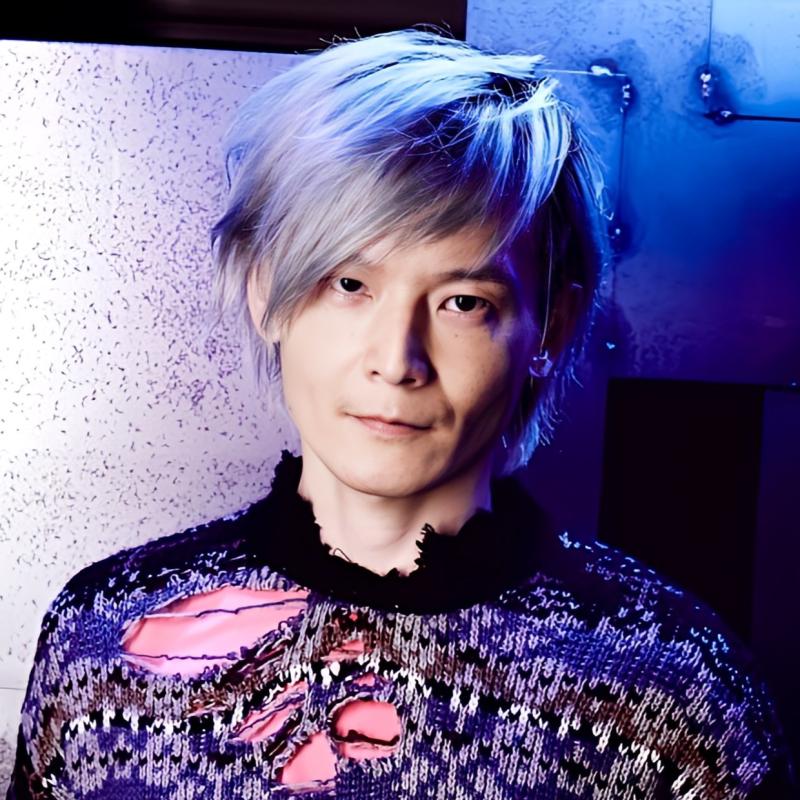
Hiroaki Miyata
Professor, School of Medicine, Keio University
Specialises in data science, scientific methodology, and value co-creation;
His research revolves around promoting social reform through utilising data science and other scientific methods to change society for the better. Is involved in a range of projects in and outside the field of medicine, such as the National Clinical Database involving 5,000 hospitals around Japan in collaboration with the medical specialist system and the nationwide COVID-related LINE surveys led by the Ministry of Health, Labour, and Welfare. Also works with the Keidanren and World Economic Forum to develop a new vision of society. One of the visions of society that Miyata has co-created is a “resonant society” characterised by vibrancy and diversity where each individual shines through experiencing that world with others.
View Profile
Close
close
Speakers
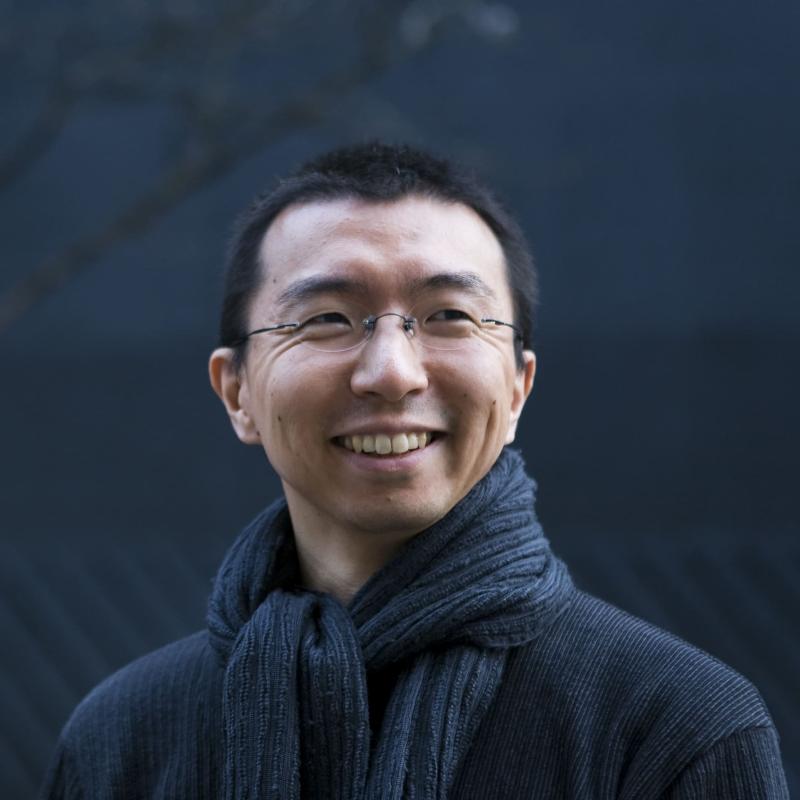
©David Vintiner
Sou Fujimoto
Sou Fujimoto Architects
Sou Fujimoto was born in Hokkaido in 1971.
Graduated from the Department of Architecture, Faculty of Engineering at Tokyo University, he established Sou Fujimoto Architects in 2000.
Among his recent renowned projects is the 1st prize for the 2014 International Competition for the Second Folly of Montpellier, France ("L'Arbre Blanc"). Additionally in 2015, 2017 and 2018, he won several international competitions with 1st prize in various European countries. In Japan, he was selected as the Expo site design producer for the 2025 Japan International Exposition (Osaka/Kansai Expo). In 2024, he was selected for “Subcontract for the Basic Design of the International Center Station Northern Area Complex (Tentative)” in Sendai, Miyagi.
His notable works include; “House of Music” (2021), “MARUHON makiart terrace (Ishinomaki Cultural Center)” (2021), “SHIROIYA HOTEL” (2020), “L’Arbre Blanc” (2019), “Serpentine Gallery Pavilion 2013” (2013), “House NA” (2011), “Musashino Art University Museum & Library” (2010), “House N” (2008) and many more.
View Profile
Close
close
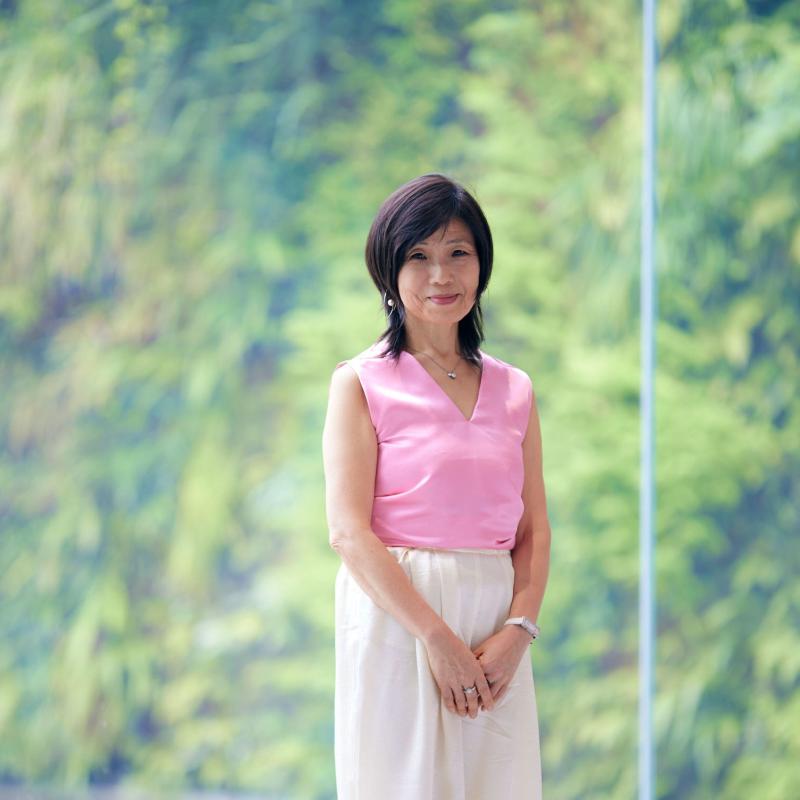
Yuko Hasegawa
Curator, Visiting Professor at Kyoto University
Yuko Hasegawa is a curator, educator and writer based out of Tokyo. She currently holds positions as Director of the 21st Century Museum of Contemporary Art, Kanazawa, Director of Art and Design of the International House of Japan, Curator of the Better Co-being pavilion at Expo 2025 Osaka-Kansai, Artistic Director of the Inujima Art House Project and Professor Emeritus of Tokyo University of the Arts. She was Artistic Director of the Museum of Contemporary Art, Tokyo until 2021 and during her post she curated solo exhibitions of Dumb Type, Olafur Eliasson and rhizomatiks among others.
She has curated Japanese contemporary art and media and technology extensively both domestically and internationally. Her curatorial language is interdisciplinary, encompassing not simply art but also architecture, design, science and anthropology, and combined with global curating experience, allows her to view art as part of a single, holistic ecology.
Hasegawa has also curated, either solo or in a joint capacity, international art biennials including the 7th International Istanbul Biennial (2001), the Shanghai Biennale (2002), the 29th São Paulo Biennial (2010), the Sharjah Biennial 11 (2013), and the 7th Moscow Biennale (2017), Thailand Biennale, Korat (2021) and also served as art advisor to the 12th Venice Architecture Biennale (2010). She has been honored with the Officier de l'Ordre des Arts et des Lettres, France (2024).
View Profile
Close
close
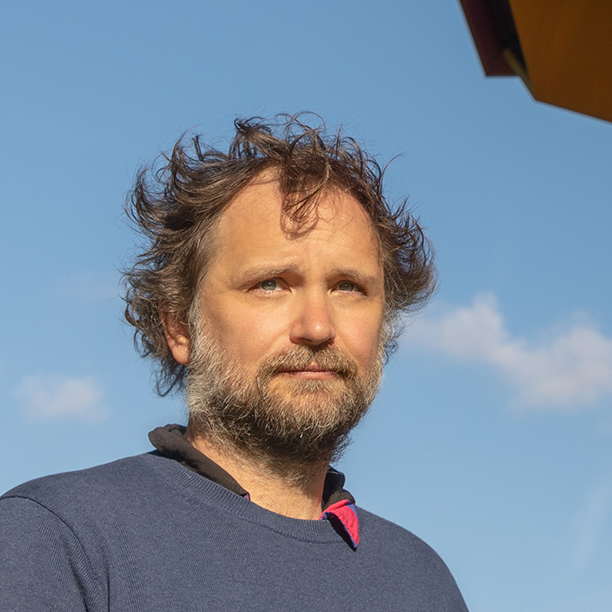
©Tomás Saraceno. Photography by Dario Lagana
Tomás Saraceno
Artist
Tomás Saraceno (b. 1973, he/him/his) is an Argentina-born, Berlin-based artist whose projects dialogue with forms of life and life-forming, rethinking dominant threads of knowledge and recognizing how diverse modes of being engage a multiplicity of vibrations on the Web of Life. For more than two decades, Saraceno has worked with local communities, scientific researchers, and institutions around the world, and has activated open-source, interdisciplinary, collective projects, including Museo Aero Solar (2007–), the Aerocene Foundation (2015–), and Arachnophilia, towards a society free from carbon emissions, for intra and interspecies climate justice. Saraceno has been the subject of solo exhibitions and permanent installations at museums and institutions internationally, including The Serpentine Gallery, London (2023), The Shed, New York (2022), Palais de Tokyo, Paris (2018); Museo de Arte Moderno, Buenos Aires (2017); K21 Kunstsammlung Nordrhein-Westfalen, Ständehaus, Dusseldorf (2013); the Metropolitan Museum of Art, New York (2012); and Hamburger Bahnhof – Museum für Gegenwart, Berlin (2011). Saraceno has participated in numerous festivals and biennales, including the 17th Venice Architecture Biennale (2021) and the 53rd and 58th Venice Biennales (2009, 2019).
View Profile
Close
close
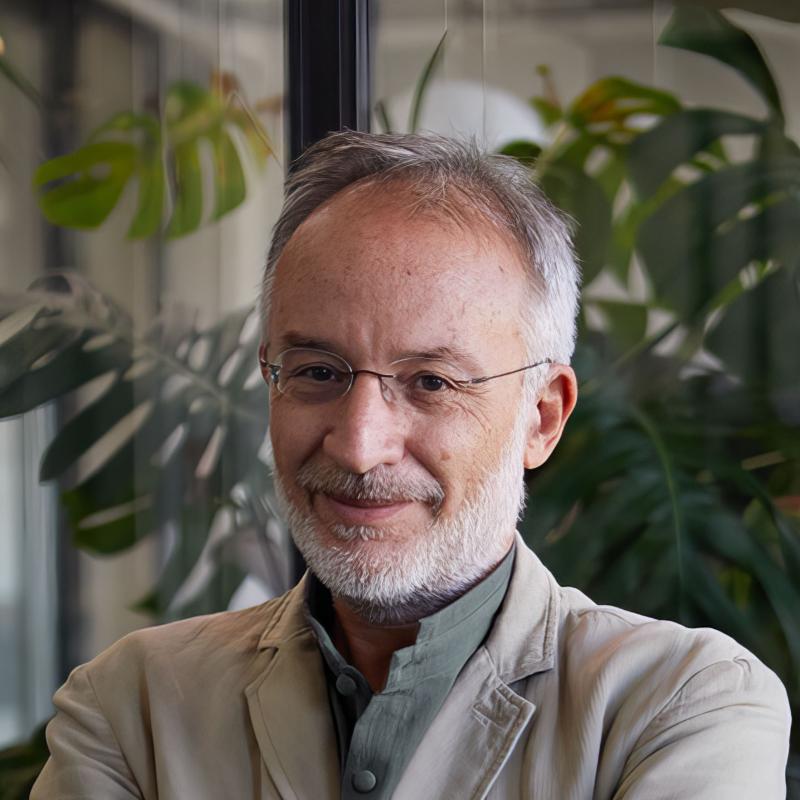
©and the Credits are for the Photographer Giulio Boem
Stefano Mancuso
University of Florence and Pnat founder
Stefano Mancuso, Professor at the University of Florence is the founder of plant neurobiology and one of the world's leading authorities in this field which explores signaling and communication at all levels of biological organization. He published more than 300 scientific papers in international journals. His last books (translated in 27 different languages) include Brilliant Green: The Surprising History and Science of Plant Intelligence; The Revolutionary Genius of Plants, a New Understanding of Plant Intelligence and Behavior (Galileo Award); The Nation of Plants; The Incredible journey of plants; Tree stories. Some of his recent exhibitions include: The Florence Experiment (with Carsten Holler) at Palazzo Strozzi (2018, Italy); The Nation of Plants during the XXII Triennale di Milano (2019; Italy); The Botany of Leonardo (with Fritjiof Capra) (2019, Italy). Symbiosia at Fondation Cartier (2019; France), Econtinuum (with Thijs Biersteker) at NXT Museum (2021, The Netherlands); Mutual aid at Architecture Biennale Venezia (2021; Italy); Talking God at the Thailand Biennale 2022
View Profile
Close
close
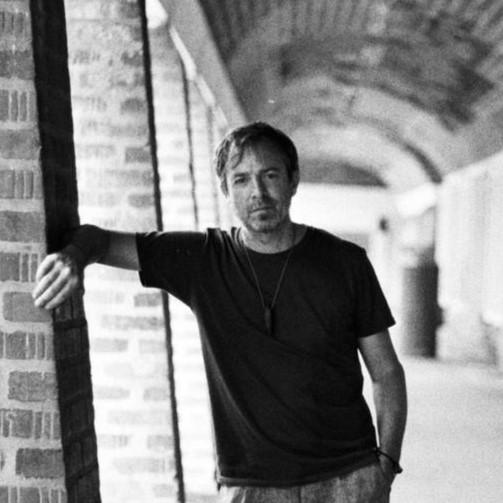
©Romeo Erlich
Leandro Erlich
Artist, Leandro Erlich Studio
Leandro Erlich was born in Argentina in 1973. He lives and works between Paris, Buenos Aires and Montevideo. In the last two decades, his work has been exhibited internationally and is part of the permanent collections of prestigious museums and private collectors, including: Museo de Arte Moderno, Buenos Aires; The Museum of Fine Arts, Houston; Tate Modern, London; Musée National d'Art Moderne, Centre Georges Pompidou, Paris; 21st Century Museum of Art Kanazawa, Japan; MACRO, Rome; Jerusalem Museum and many other institutions significant to his career.
Erlich has created several striking public works, such as La Democracia del Símbolo at the Obelisco and MALBA Museum in Buenos Aires, Maison Fond for the UN Climate Change Conference in Paris, Bâtiment at Nuit Blanche Paris, Ball Game for the Summer Youth Olympic Games in Buenos Aires, Port of Reflections exhibited at the MMCA in Seoul, and Palimpsest at the Echigo-Tsumari Art Triennial in Japan. Currently, his monumental work La Carte, À l’ombre de la ville is a permanent installation of the city of Bordeaux, France.
During the past years, Leandro Erlich has participated in major exhibitions at institutions such as CAFAM in Beijing, the MALBA in Buenos Aires, CCBB in several cities in Brazil, PAMM in Miami, and the Centre Pompidou Metz in Paris, reaching several times the record of visitors.
As a conceptual artist, his work explores the perceptual bases of reality and our ability to interrogate these same foundations through a visual framework. The architecture of the everyday is a recurring theme in Erlich’s art, aimed at creating a dialogue between what we believe and what we see, just as he seeks to close the distance between the museum or gallery space and daily experience.
View Profile
Close
close
Co-creating Cultures for the Future Week
Multicultural resonance towards a better future
The programme, together with the General Sponsors, explores: 'What creative collaborations and actions can be considered for working together across different cultures to solve common challenges?'
-
2025.05.05[Mon]
17:30~20:00
(Venue Open 17:00)
- Theme Weeks Studio
- * Programme times and content are subject to change. Any changes will be announced on this website and via the ticket booking system.
- * The schedule is subject to change depending on the organiser's circumstances.
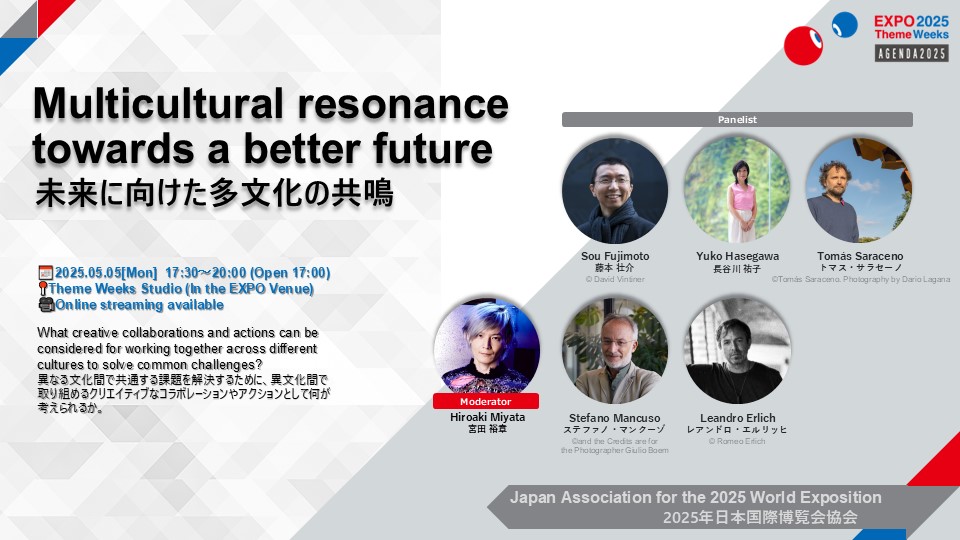
OTHER PROGRAM
Co-creating Cultures for the Future Week


